

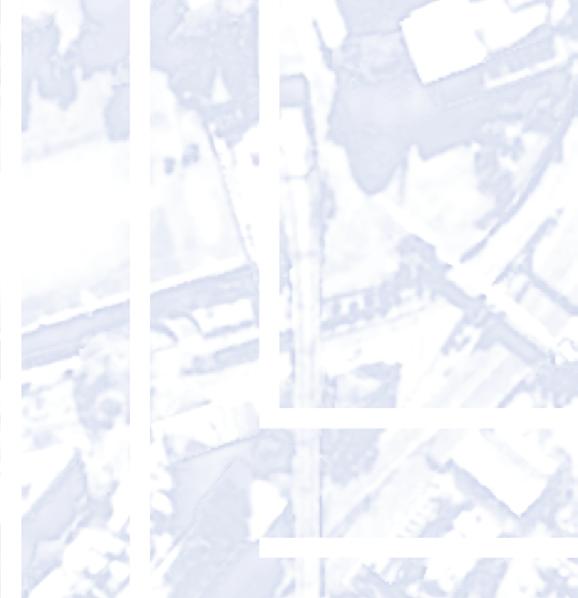
CITY





OUR CITIES AND REGIONS PBuilt Environment



Student Research 2019
Bachelor of City Planning
Master of City Planning

















Student Research 2019
Bachelor of City Planning
Master of City Planning





































007 009

017
Message from the Dean
019
Message from the Program Director
123
Message from Course Convenor Bachelor of City Planning
Bachelor of City Planning, Final Year Theses
Message from Course Convenor Master of City Planning
125

174
Master of City Planning, Final Year Theses
175
Acknowledgements

Our vision is to inspire and develop the next generation of city makers and prepare them for global careers. We are proudly achieving this through initiatives designed to empower our students; to shape their learning and establish global research and learning partnerships for knowledge exchange and thought leadership. Our Faculty is working in an environment where students determine their own path to global careers. Through personalised education that is both broad and deep, within our programs connecting world-class knowledge with leading practice to prepare them for meaningful careers. Our students
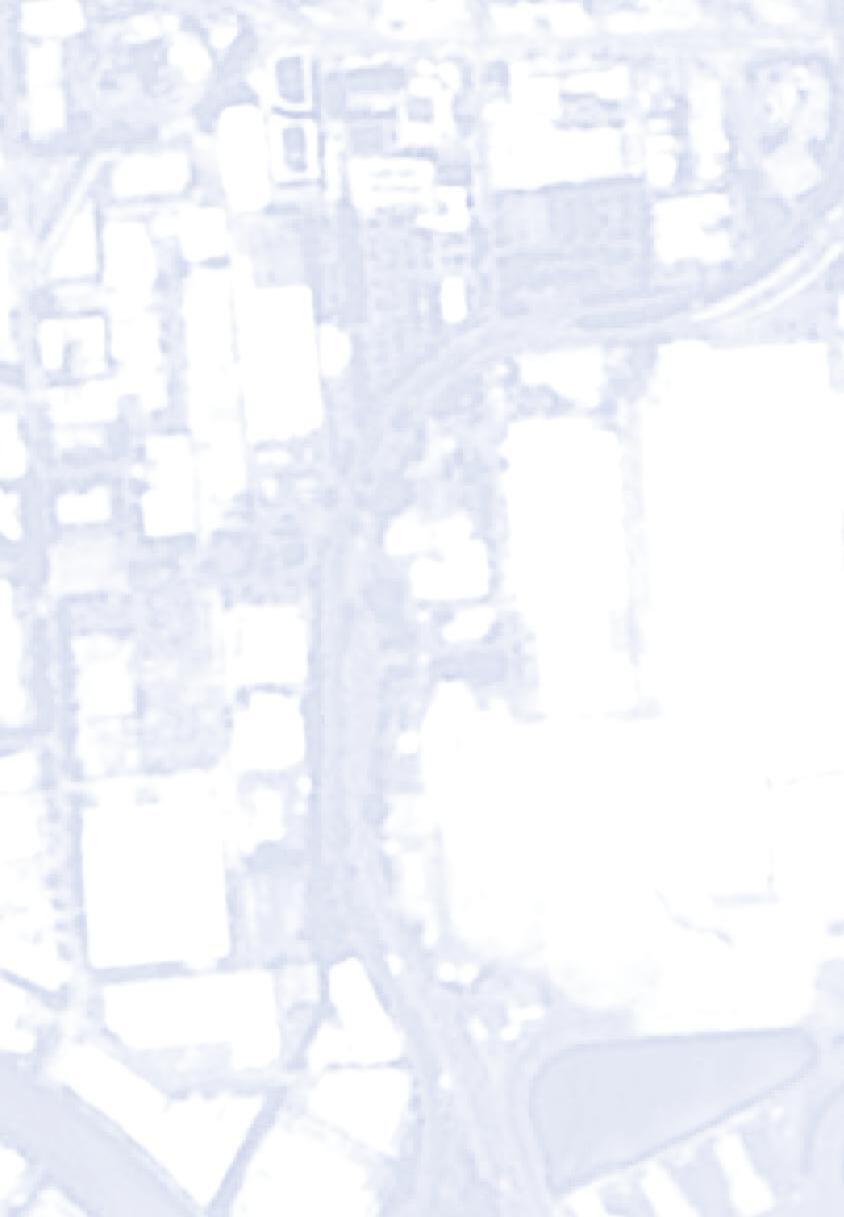




have been learning from highly regarded academic planning experts and a select group of seasoned planning practitioners—all of whom combine theory, knowledge and practical skill sets in classroom pedagogy. Additionally, project-based learning experiences developed from briefs relevant to, and provided by industry, as well as the one-year BCP work experience unique to our Faculty. Our research agenda is vital to cities, their built environments, and inhabitants. Research is ingrained in the Faculty’s culture through the interplay of research with education and practice. The capstone projects featured in this

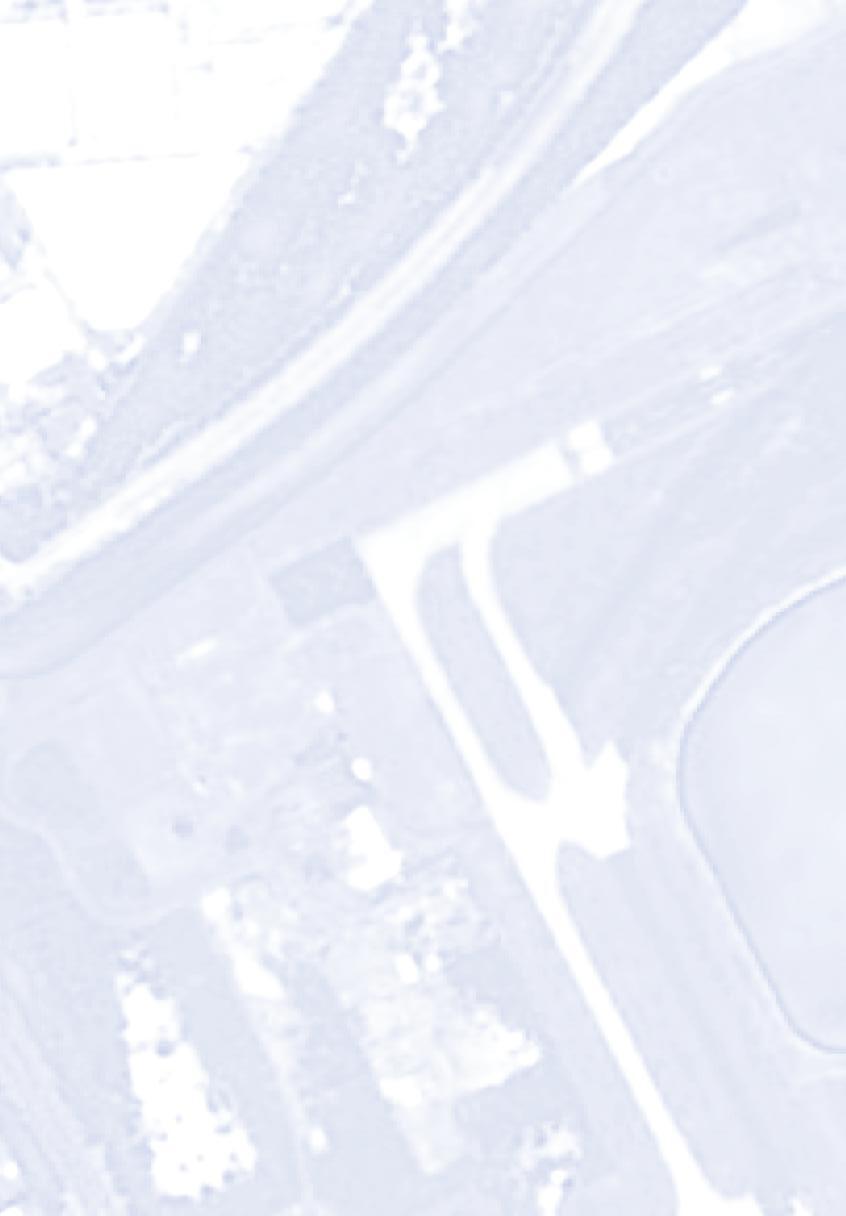
nexus that the Faculty boasts as a strength in both undergraduate and postgraduate planning programs.
Since 1966, the Planning Program at UNSW Built Environment has educated many of the key planners and urbanists who have shaped Australia’s cities. A top ERA ranking of 5* for Urban and Regional Planning in 2012, 2015 and 2017, recognises the contribution of excellence in research, as well as quality education, to the success of the Planning Program and the academics who have been pivotal in contributing to an informed discourse on the development of our cities.




As we work toward UNSW 2025, our Planning programs will continue to be an integral part of the Faculty. We will continue to build on our strong pedagogical foundation in evidencebased analysis, logical and lateral urban thinking, creative processes and technical rigour.
UNSW Built Environment provides the platform to generate innovative solutions for today’s world that also anticipate and mitigate tomorrow’s urban problems. Our imperative is to make the world a better place through a better built environment.
Professor Helen Lochhead Dean, UNSW Built Environment


A warm congratulations to this year’s graduating planning students. I hope you enjoy this special celebration that marks the successful completion of your graduation thesis.
This year’s thesis catalogue includes over 75 thesis projects, both undergraduate and


the tremendous changes some are undergoing in terms of urban form, economy, society and culture. The topics touch on many of the challenges and opportunities in city planning, including emerging issues on greening cities, bike share systems, community gardens in regional areas, women’s safety on campuses, and timely issues such as, City Deals, urban

project draws on a critical mass for future city planning, evaluation, and strategies.
I would like to extend my appreciation to the Program, City Futures Research Centre, thanks go to Lilly and Susie, our fabulous
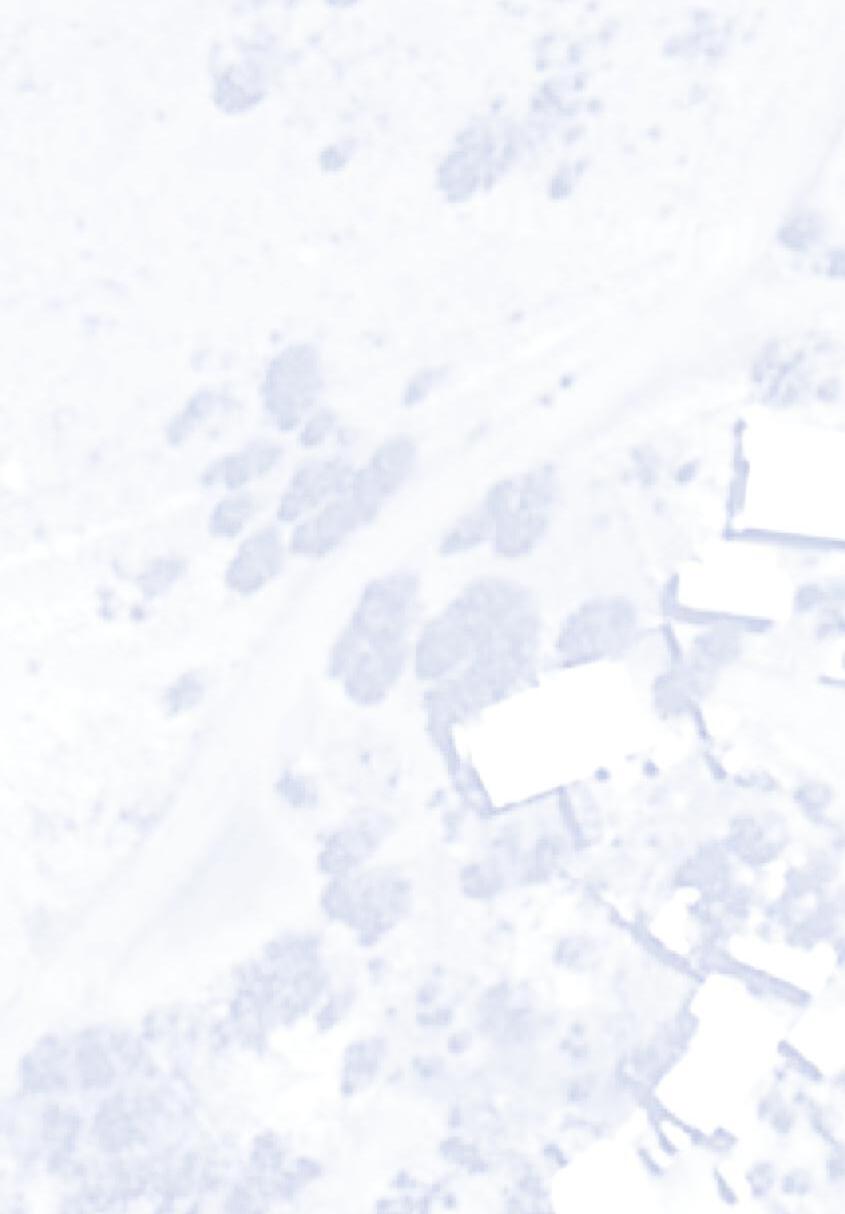

the year. As supervisors and students, we have met face-to-face when needed, sent many
meetings, sometimes with tears, to deliberate ideas, concepts and theoretically challenging questions. I am sure that you all are inspired by this collection of tremendous work as a result of unpacking Pandora’s box of ‘Planning for Our Cities and Regions’.


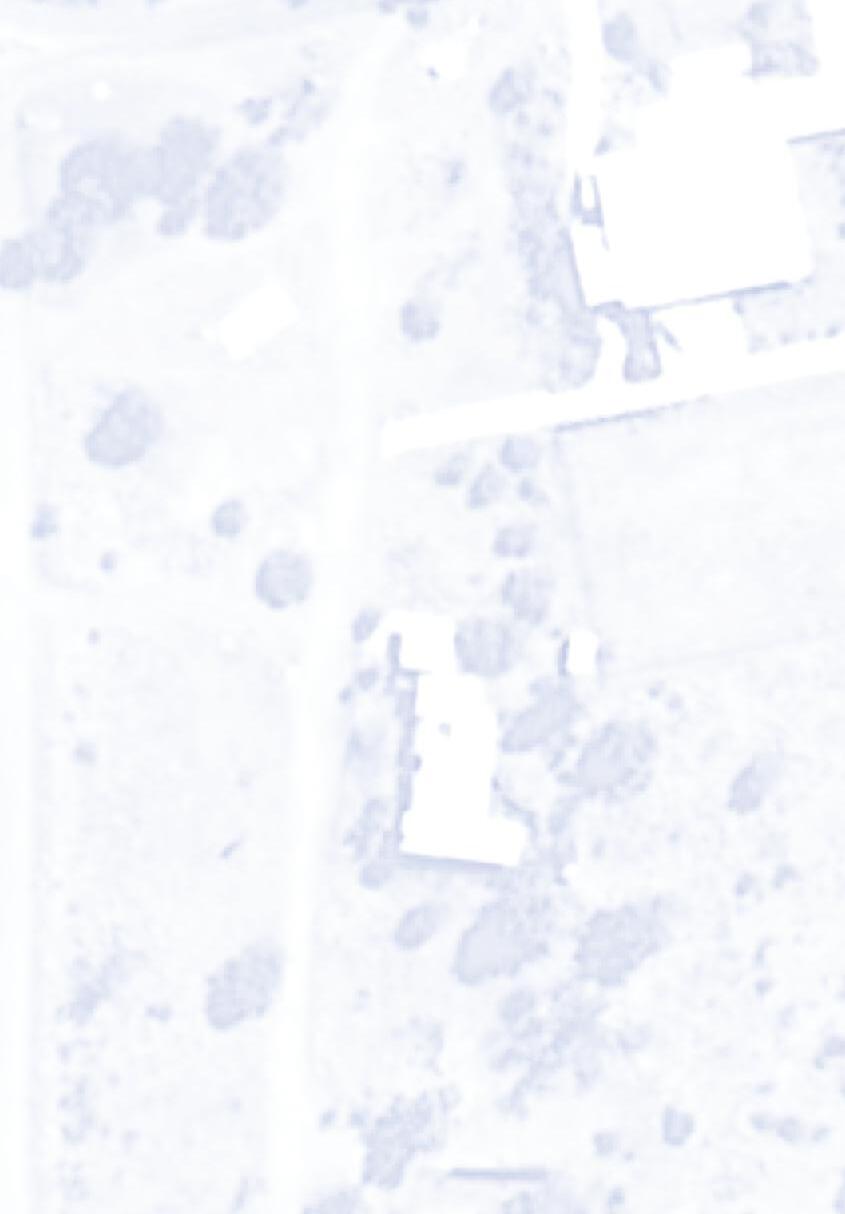

Finally, I would like to express my sincere thanks to our industry partners. No doubt the onthe-job, practical industry experience students gained during their one-year hiatus from university has been thoughtfully woven into their thesis discussions, recommendations or even posed further questions for research.
We are very proud of the work produced by this year’s students, as it collectively shows a great deal of knowledge, inspiration and
to have successful and worthy careers in city planning practice but will enable you to tackle the many challenges facing our modern urban environments towards a liveable city.
Once again, congratulations on your remarkable achievement at UNSW over the past years.


Please always remember that planning is a small world. No matter where you travel within the state, inter-state or overseas throughout your career, you will meet many UNSW planning alumni. Our school of planning ages 54 years with thousands of graduates—be sure to remain connected.
Methods’ lecture:
“Meeting each one of you is like winning a ‘Gold Lotto’ in my statistics dictionary”.
Bon Voyage,
Associate Professor Hoon Han Director, City Planning Program


1- Georgia King
2- Grace Fryar
3- Eliza Scobie
4- Olivia Page
5- Rose Pardey
6- Georgia McKenzie
7- Ryan Harris


8- Mary Ellen Trimble
9- Bonnie Hale
10- Lauren Funari
11- Jasmine Tranquille
12- Kin Yue Carly Choi
13- Sonya Constantinou
14- Marcella Hagar
15- Alexandra Hopkins
16- Catherine Timbrell
17- Phoebe Schumacher
18- Harini Kannangara
19- Timothy Collis
20- Sarah Fabian
21- Xue Vera Xia


22- Edmund Yip
23- Oscar Dell
24- Rasmus Altenkamp
25- Blake Christodoulou



Bachelor of City Planning



26- Sahara Dukes
27- Reece Hemingway
28- Matthew Li
29- Rahath Islam
30- Jose Palma Valiente
31- Ellen Rowles
32- Samual Kelly
33- Rebecca O'Donnell

35- Kar Kei Helen Lai
36- Ho To Vanessa Wan
37- James Goddard
38- Michael Bonnici
Not Pictured: Teresita Chan
Emma-Rose Cooper
Jamie Fermio


39- Aidan Harrington
40- Parker Wai
41- Hector Titterton
42- Stephanie Wu
34- Jingchen Lucretia Liu
43- Yu Ching Cathy Chung

Christopher Lazaro
Isaac Toledano
Luheng Wang
Fangzhong Kyrie Zeng
Ray Zhao







1- Yuhuan Peng
2- Xuanbo Liu
3- Apurva Bora
4- Deeksha Nathani


5- Maurishka Sahani
6- Zain Ul Abidin
7- Jacob Dwyer
8- Bhavesh Taunk


9- Elise Wood
10- Phoenix Chan
11- Shicheng Lu

12- Annabelle Cooper Term 1
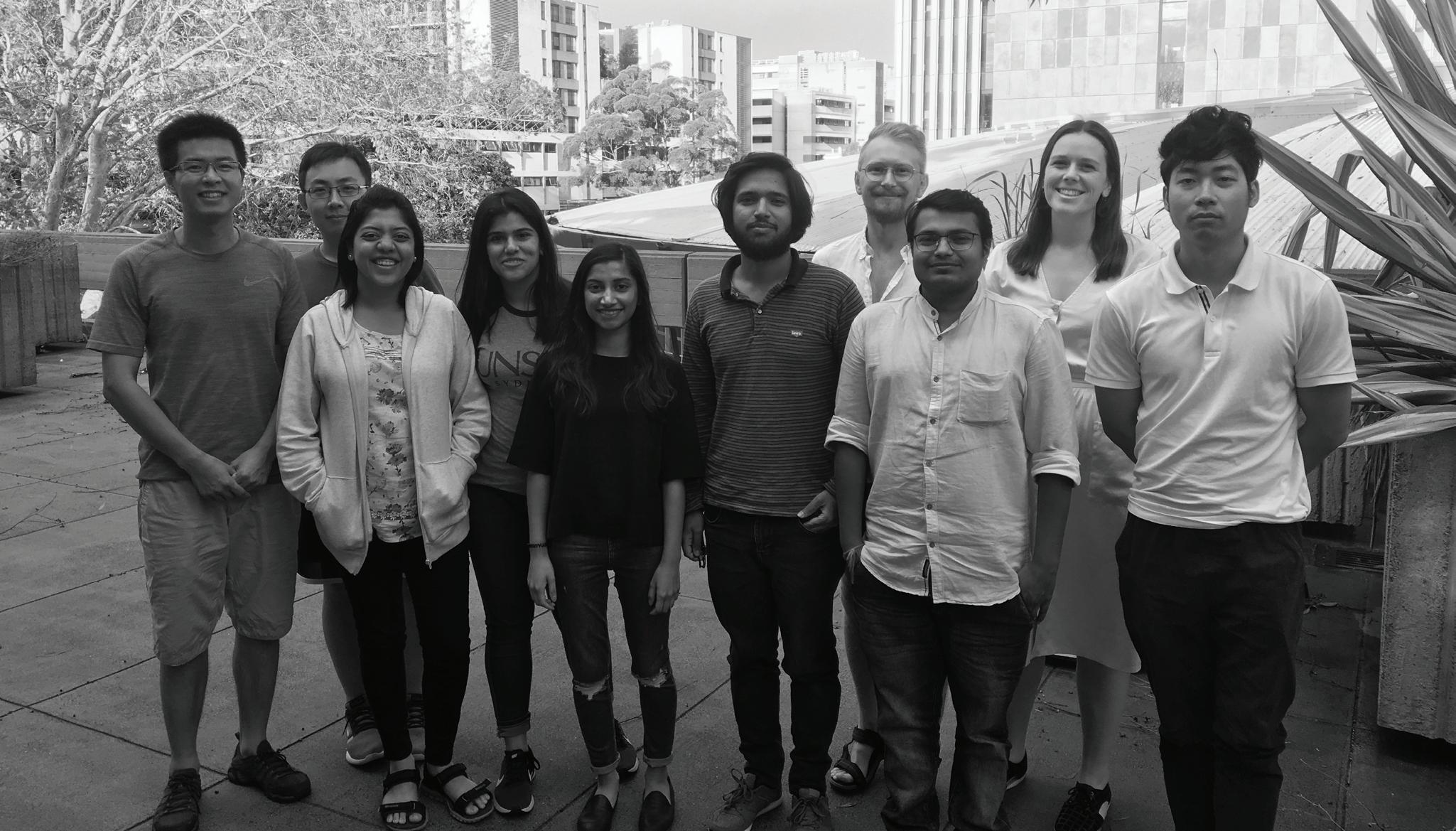
Master of City Planning




13- Xiaoai Guo
14- Asmaa Rabiee

17- Cameron Jewell

18- Wing Tung Leung
19- Jema Samonte
20- Deng Yan
21- Yiqing Ni
22- Xintong Liu


Not Pictured: Sarah Ng Joyce Jiang





















































It is exciting to see another exhibition catalogue come to fruition and to acknowledge its place in 54 years of archival material produced by
of City Planning degree, students design and then execute independent research on a topic of their choice. Their research culminates in an undergraduate thesis of up to 20,000 words, the capstone project of their degree; a snapshot of hundreds of hours of class time, thousands of hours of research, carefully
days of writing produced by our graduating class.


Groundwork for a thesis project begins in semester one through a preparatory course that revisits the practicalities of research
Bachelor of City Planning

design, research ethics and methodology. Students develop a research proposal that sets out exactly what they plan to do in their independent research project, how they will do it, and why it is worth doing. The
breadth of planning as a discipline and the interests and backgrounds of the students themselves. Students have been involved with GIS mapping, built-environment audits, in-depth interviewing, participant observation, creating and administering online surveys via social media platforms, ABS analysis, and archival research. They have covered issues such as: the music ecology of cities, postwar housing, defunct department store spaces, Local Planning Panels, the Greta Thunberg







spaces, and a range of other topical planning challenges that face our cities and regional areas today.
from industry. Successful completion and examination of so many independent research projects within a relatively short space of time would not be possible without guidance and input in supervisory and examination roles—


this opportunity to thank the many other people who have assisted students in their research endeavours this year. Literally hundreds of people have contributed directly through
participation in interviews, surveys and other advisory capacities.
Throughout their undergraduate journey, students have intensively studied the forces that have shaped planning outcomes for better
them, I can see that they are ready to take on new challenges and make their marks on the planning profession. No doubt, each year sets the benchmark higher for the next and I am proud to have been part of their success.


Dr Christine Steinmetz Course Convenor





“Naturalistic observational research methods are employed in this thesis to directly observe and record the movement of cyclists in three Sydney-based intersections.”




Bachelor of City Planning






In an era of climate change, rising congestion and chronic disease, the bicycle has the power to solve
However, there are challenges related to the growth of cycling as a major transport mode choice. The inherent
of cyclist movement raises questions about the safety of cyclists and how urban planners and city-makers should design for, and regulate, the cycling environment. Naturalistic observational research methods are employed in this thesis to directly observe and record the movement of cyclists in three Sydney-based intersections. Attributes


of cyclists are recorded, to typologise distinct groups and cross-analysis is undertaken to compare behaviours at
cyclists exhibit a high rate of road rule violations, their safety is objectively retained throughout. The results of this study diagrammatically demonstrate the multitude of routes that cyclists chose routes with high rates of rule violations are further examined. Findings provide design recommendations for separated cycleways in Sydney as well as policy recommendations for deregulating in New South Wales.



“A shift towards ‘collaborative consumption’ and technological advancements have contributed to the rise and abundance of short-term rental accommodation.”







Bachelor of City Planning








Widespread use of home sharing platforms such as Airbnb, Flipkey and Homestay is attributable to ease of accessibility, choice for potential holiday makers, local experiences at a fraction of the cost for a hotel, and most importantly, another avenue for those who need to rent properties on an ad hoc or shortterm basis. These digital platforms list and share STRA properties universally. A shift towards ‘collaborative consumption’ and technological advancements have contributed to the rise and abundance of short-term rental accommodation (STRA). Arguably, alternative home



sharing platforms can have detrimental impacts in the real estate market— both renting and buying, particularly in regional areas of New South Wales. This thesis aims to determine to what extent does STRA in regional areas of New South Wales require regulatory intervention. The study explores the role of the New South Wales planning system in regulating STRA by synthesising
The thesis provides recommendations to ensure that STRA supports the tourism industry, short term renters and local communities.


“Creation
of meditative mindfulness places in highdensity living environments could be a new way to enhance dwellers mental wellness.”







Bachelor of City Planning








Australia’s population is projected to increase somewhere between 37.4 - 49.2 million people by 2066. Undoubtedly, a growing population puts pressure on Australia’s urban land, and therefore, higher density living will be one solution for housing demands; but this comes at a cost. Research has shown that there is a connection between high-density living and poor adult mental health. However, a western adaptation of the Buddhist originated concept of mindfulness in easing anxiety, overstimulation and mental stress. Creation of meditative mindfulness places in high-density living

environments could be a new way to enhance dwellers mental wellness. This thesis explores how mindfulness can be infused into place planning and design to promote mental wellness in high-density living environments. Through spatial modelling, three representative locations in Wolli-Creek have been chosen for surveying. In-depth interviews with academic professionals and planning practicality and feasibility of mindfulness applied to a daily planning practice. This thesis concludes with a discussion on how mindfulness place elements can be implemented into policies and applied across Sydney.






“The research compares shared bike trip generation data with local characteristics of two suburbs – Ultimo and Kensington.”




Bachelor of City Planning








strides to incorporate technology into city infrastructure as a solution to deliver more sustainable solutions in urban management and provide better transport options for citizens. A recent phenomenon, or ‘solution’ to sustainable transport, has been the introduction of the bike sharing systems. Bike sharing systems, or BSSs have been widely adopted across the globe, providing public bikes to help facilitate people’s daily commute. In 2017, a dockless BSS was introduced in Sydney; the system boasts to feature a high degree
bikes wherever they want after paying a small fee to use it. However, this system
has faced operational challenges such as low usage rate, random bike parking and vandalism. As a result, many shared bike businesses ceased operations
built environment characteristics that can facilitate the use of a dockless BSS in Sydney. The research compares shared bike trip generation data with local characteristics of two suburbs – Ultimo and Kensington. The thesis provides a comprehensive analysis on current BSS related policies complimented by indepth interviews with councils. Findings from this research suggest how Sydney can modify policies to provide a successful dockless shared bike environment.







“The development of the Western Sydney Growth Areas underpins one of Australia’s fastest growing regions, whose success is bound to appropriate infrastructure provisioning.”



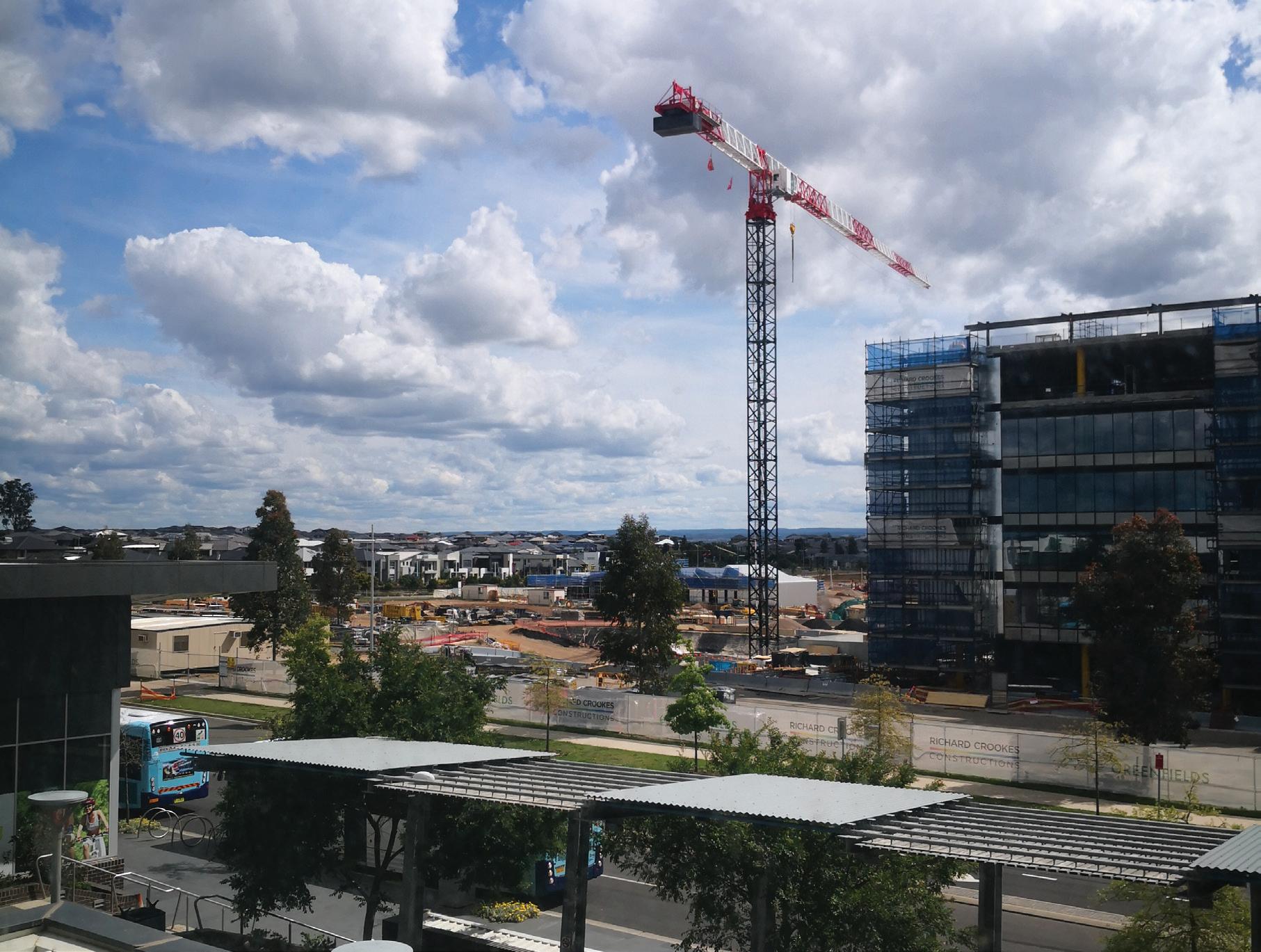
Bachelor of City Planning






The ability to fund infrastructure to support the growth of urban environments to meet the amenity and lifestyle needs of their populations is a fundamental consideration when planning for urban growth. The development of the Western Sydney Growth Areas (WSGAs) underpins one of Australia’s fastest growing regions, whose success is bound to appropriate infrastructure provisioning through funding policies. This thesis aims to explore the current developer contributions system used for the funding of State infrastructure within the WSGA. Informing this research is a critical review of literature relating to infrastructure funding with a focus on equity to determine whether current



funding models deliver positive outcomes for all stakeholders. Additionally, exploring various domestic and international infrastructure funding policies provides a basis for the scrutiny of the WSGA system. This research is further supported by in-depth interviews with public servants and industry professionals who operate in this sphere of the planning system to gauge perspectives surrounding best practice applications of developer contributions for infrastructure funding. This thesis ultimately aims to outline the positive aspects and shortfalls of infrastructure funding policy as it applies to the WSGA.






“This thesis explores the perception of unsafe spaces at UNSW as experienced by international female students through the walking interview technique.”




Bachelor of City Planning








The safety of women in our cities and towns has increasingly been recognised as a persistent theme in Australia and globally. Environmental characteristics that contribute to women’s perception of safety such as lighting, accessibility for prams, and pavement hazards, are important considerations for planners and designers. University campuses, as they too face challenges in providing safe environments for women. This thesis explores the perceptions of unsafe spaces at UNSW as experienced by international female students through the walking interview technique. The stories shared through images and voice help gain a deeper understanding
of how they perceive safety and comfort in public spaces on the UNSW
a gap in existing literature concerned with crime prevention principles that focus on safety in campus design. The aim of my research, however, is to challenge some of these principles and prevention assessment that could be cultural backgrounds within a university environment. Overall, safety concerns faced by international university students should become more apparent, allowing built environment professionals to reevaluate a more extensive approach for university campuses.







“HSR stations in turn are critical nodes in a city where international, regional and local forces intersect.”




Bachelor of City Planning







High Speed Rail (HSR) is used by governments across the globe as a part of nation-building economic, employment and growth strategies. HSR stations in turn are critical nodes in a city where international, regional and local forces intersect. They can
and regional restructuring, but their mere existence is not enough to accelerate urban development and place-making, particularly outside metropolitan areas. Many factors play a role in ensuring the vitality of the immediate station-area, such as station location, governance, urban design, and local transport integration. Drawing


on an extensive review of academic framework to analyse international case studies and a review of the history of HSR in Australia. This framework is also used for considering the views of key interviewees on transport and precinct planning in NSW. The thesis argues that, when planning for an HSR network in NSW, many elements must be the platform, to stimulate successful, sustainable station-area development. HSR stations bring the function of an airport to the centre of the city, and integrated strategic and local planning around them is essential.






“Schools in high-rise buildings challenge the conventional wisdom of how and where school infrastructure should be built.”




Bachelor of City Planning








The growth of metropolitan centres is continually challenging the provision of public infrastructure. This is particularly evident in the New South Wales government school system, where many government schools in the Sydney region are ‘at capacity’ with limited land available to provide additional infrastructure. This issue is set to become exacerbated, with an additional 164,000 students in New South Wales schools projected by 2031. High-rise schools are one response to meet the demand of future school enrolments in growing cities. However, schools in high-rise buildings challenge the conventional wisdom of

how and where school infrastructure should be built. To explore these issues, a research design that includes a literature review, case study analysis, desktop analysis, in-depth interviews and online surveys, will best unpack the real challenges of our future school infrastructure. The research highlights the presence of high-rise schools and whether or not they are truly the answer to space and cost constraints. Findings also reveal that there is little consensus on best practice high-rise schools in Australia and there is need for further research and implementation of better design standards.






“Death and burial are often taboo subjects yet play a fundamental role in the daily lives of communities— physically, spiritually and emotionally.”




Bachelor of City Planning







Sydney’s cemeteries are facing a critical shortage of burial space; it is estimated that currently available burial plots will be exhausted by 2050. Death and burial are often taboo subjects yet play a fundamental role in the daily lives of communities—physically, spiritually and emotionally. Therefore, it is critical that strategic planning and local government decision makers work together and recognise challenges associated with existing cemeteries as Sydney’s population continues to not only grow, but age. Undoubtedly, there are sensitive issues surrounding the nature of death and burial; cemeteries and burial plots are rarely relocated and therefore must be managed. The management

of Sydney’s most iconic and historic cemeteries requires not only appropriate and proactive measures but on-going
the role of planning in the management of ageing cemeteries in Sydney. Through a critical analysis of academic literature and government policy, combined with in-depth interviews with industry experts, this thesis explores cemetery issues: feasibility, planning, and community


in the Sydney metropolitan area. This thesis will contribute to the conversation surrounding proactive management and maintenance practices of Sydney’s ageing cemeteries.





“This thesis explores positive impacts that a good design outcome of public spaces can have on night-time economies.”




Bachelor of City Planning






Sydney’s night-time economy, historically Australia’s most successful and vibrant,
‘one-punch attacks’ and other forms of alcohol-fuelled violence since the early 2000’s. This issue ultimately led to the implementation of lockout laws, which
impact on the success of businesses and wider precincts which make up Sydney’s night-time economy. It has


high-quality public spaces may be an alternative solution which allows for night-time economies to prosper, allowing people to feel safe in their urban environments at night. This thesis
explores positive impacts that a good design outcome of public spaces can have on night-time economies. This study is supported by a literature review
measures put in place by both City of Sydney Council and Wollongong City Council, to ensure that high quality public spaces are provided throughout their night-time economy precincts. A spatial analysis of both council areas is then conducted, informed by the implementation of these measures and


thesis concludes by exploring how public spaces can be designed to allow for


“In 2017, 124 million people were experiencing some level of food insecurity.”







Bachelor of City Planning







Food security is often an issue that is taken for granted in developed nations. However, in 2017, 124 million people were experiencing some level of food insecurity. The role of planning in food security has often been neglected which has to lead to the expansion of city encroachment on important agricultural areas leading to a loss of important primary producers. Peri-urban areas are vital for the food security of cities as they play a pivotal role in providing perishable goods to cities. This thesis explores the impact that planning has on agriculture in both developed and undeveloped nations with a focus on Australia. This research is informed by a critical review



of literature on planning’s involvement and the importance of maintaining periurban agriculture in order to maintain food security in developed countries. The research is informed by a policy review of international and national farming policies and is supported by a series of in-depth interviews with academics, planning experts, private companies, and peri-urban farmers. As the population of the world continues to grow it is vital that planning’s role in maintaining food security is recognised. This thesis aims to provide policy recommendations to assist in the better protection of periurban farms and provide increased food security for Australia.


parks planning and critique how diverse voices were represented throughout the process.”







Bachelor
of City Planning






City parks as our own backyard: Are they inclusive and diverse in Western Sydney?
Parks are an asset to the city that provide social, environmental, physical
increasing pressure to maintain parklands and make great public, inclusive spaces especially in times of high-density living and a compact city agenda. There are many regional parks investments and diverse populations, who use these parks. Through a case study analysis of three regional parks


in the Western Sydney region and interviews with park planning and equity professionals, this thesis aims
parks planning and critique how diverse voices were represented throughout the process. The research shows how a collaborative approach is essential to achieve inclusive park planning in


essential to include the minority voice in the planning process to achieve a sense of community cohesion.





Bachelor of City Planning of agricultural production.”












The face of farming across Australia is undeniably changing as farmers are increasingly challenged by extreme and unpredictable weather, economic pressures, and land use change. Farms are becoming smaller, farmers are becoming older, and the days of the traditional family farm appear to be numbered. Despite these challenges, there remains a unique way of life associated with farming which Australia seems to admire, respect, and wish to preserve. This thesis is about Australian farmers and their individual experiences of, and their connection to, farm and land, as place. Through several in-depth interviews this thesis gives a voice to

of agricultural production. Through a thematic analysis of personal farming narratives framed by place literature, the multifaceted ways in which farmers experience and value place are explored. Findings indicate that there is a unique connection between farmers and place, which can be described as a sense of rootedness to the land tied to relationships with the environment, local community and family. By presenting the personal narratives of farmers, this thesis provides planning professionals with an understanding of the complexity, and importance, of the relationship between farmers and place and how this sense of place can be preserved in the rural landscapes of the future.






“…responsibilities placed on those in planning decisionmaking roles are performed by those wearing a ‘planning hat’ but are not technically planners.”



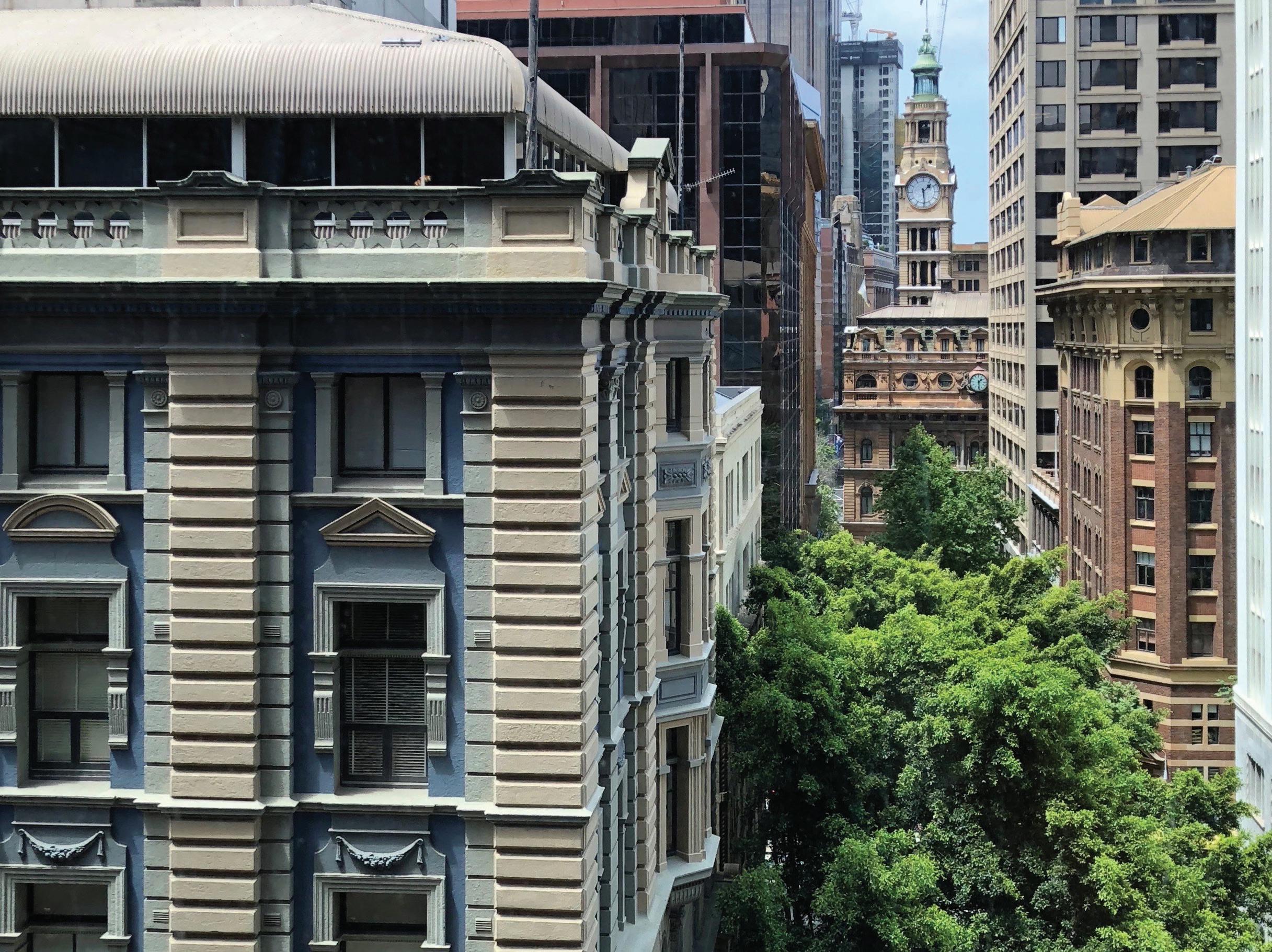
Bachelor of City Planning







Daily, we witness complex, diverse, and contentious planning-related decisions being made; often, their outcomes have a profound impact on our built and natural environments. Many would assume these decisions are made by accredited
but, increasingly, responsibilities placed on those in planning decision-making roles are performed by those wearing a ‘planning hat’ but who are not ‘technically’ planners. Although planning has evolved from an interdisciplinary background, recently, there has been a greater push towards collaboration to solve the more ‘wicked’ urban and environmental issues. However, with interdisciplinarity collaboration comes challenges. This

thesis focuses on the litany of hurdles experienced by planners, particularly,
Underpinned by qualitative research methods, a thematic analysis of literature explores “what is planning?” in contemporary Australia? This
Planning Institute of Australia and colleagues in the planning industry, in response to professionalism in industry. Conclusions will reimagine the contemporary planner as a crucial contributor in built environment to changing professional boundaries.







“Cultural enclaves are celebrated on the incline of a lifecycle,




Bachelor of City Planning







Where are they now? Is Leichhardt still “Little Italy”?
settlement patterns in Sydney with cultural Italian enclaves emerging in Sydney’s inner west during the 1950s-1960s. Leichhardt’s urban fabric, including infrastructure, business and organisations were shaped by the mutual needs of the group, creating a strong Italian community identity. Redevelopment, ageing communities,

accelerating the lifecycle of this cultural enclave resulting in a declining sense of cultural identity within the urban fabric. The current state of Italian cultural pockets is not documented or how redevelopment has impacted its identity. This thesis conducts a series

of walking interviews in Norton Street, Leichhardt, to understand how changes born migrants’ physical and emotional connections to the place. Census data has been collated to identify geographies of Italian residents, the presence of Italian businesses over time, and their contribution to the Italian identity. Cultural enclaves are celebrated on the incline of a lifecycle, but a blind

decline. This research will prompt social planners to consider cultural heritage, given the lack of formal statutory protection of post-WWII migrant heritage and to consider the attachment to place a community can have.





“… many cities are experiencing the urban heat island the public realm without enough greenery…”



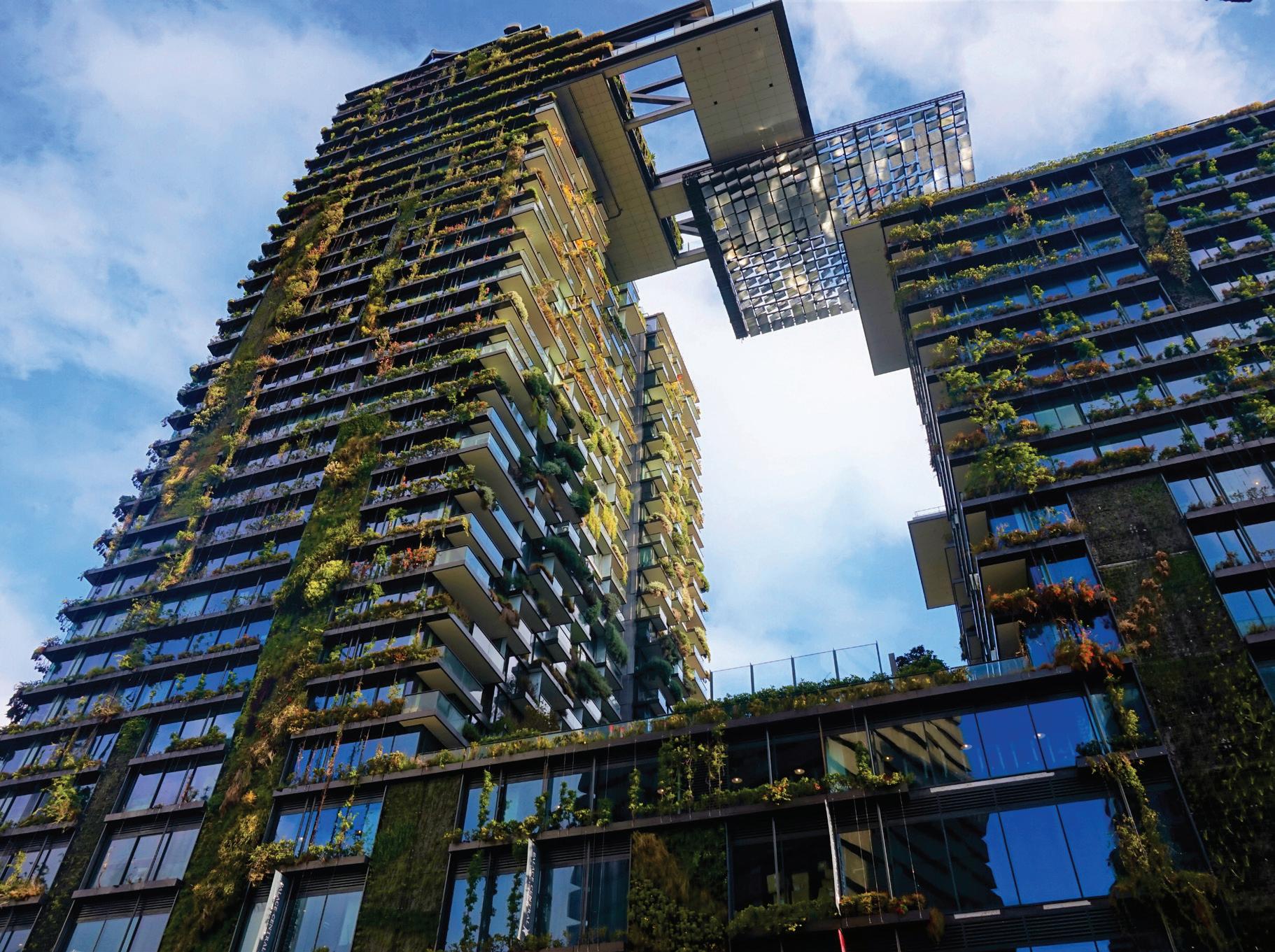
Bachelor of City Planning







Temperatures are rising across the globe and impacting our world’s fragile climate. At the same time, cities are undertaking rapid transformation to cater for a growing population and workforce. With rapid growth comes a range of challenges. Many cities are experiencing the urban heat island
structures dominating the public realm without enough greenery leading to noticeably higher temperatures in many areas. Given the rate of development in Parramatta as it progresses to be of urban heat are becoming more apparent. For this reason, this thesis will investigate how green infrastructure,

can combat the negative impacts of the CBD, and whether there are any key barriers preventing their uptake. This topic is explored through observation and in-depth interviews supported by a policy and literature review. Green
urban environments amidst climate challenges, however, there is limited uptake across New South Wales. This the challenges of implementing green infrastructure to better encourage existing and future developments to include green roofs and green walls in the Parramatta CBD.




“…it
is imperative that food planning is embedded into the planning agenda to ensure a sustainable food system for future generations.”







Bachelor of City Planning







The urban food system has an enormous footprint which is inextricably linked to all elements of how a city functions. As such, the task of feeding a city’s population has wide-reaching implications for how a city operates and grows. Historically, the discussion of food, as a city planning issue, has been ignored in both planning theory and practice. This is now changing. Political and environmental pressures have propelled planning authorities to actively plan for food by developing urban food policies. However, planning policy in Sydney continues to neglect the food system, which is coming under pressure from population growth, climate change,


global market instabilities and societal demands for environmental integrity. Given these challenges, it is imperative that food planning is embedded into the planning agenda to ensure a sustainable food system for future generations. This thesis includes a literature review that uncovers the complex relationship between food resources and cities, a website audit to investigate food planning in government policy and case studies of best practice examples of food policies implemented internationally. Findings from this research demonstrate the importance of planning for food and present key recommendations to inform future policy development.





“This study investigates if there is any evidence of a connection between walkability and actual or perceived crime rates in three recently developed master planned communities in Sydney.”




Bachelor of City Planning







Decades of research and literature have widely explored the concepts of both walkability and Crime Prevention Through Environmental Design (CPTED). There have been few studies, however, that evaluate if the factors involved in applying the four principles
walkability of a place, have any actual crime that commonly occur in public spaces. Urban planners have been enthusiastic in implementing CEPTED strategies and broadly endorse them as assisting to create highly walkable built environments. These strategies are now incorporated into master planned communities as standard best practice. This study investigates if there is any




evidence of a connection between walkability and actual or perceived crime rates in three recently developed master planned communities in Sydney. Through a comprehensive review of quantitative data, intercept surveys and semi-structured interviews with key stakeholders, this study explores if the application of CPTED principles in key public spaces within Wentworth Point, Jordan Spring and Willowdale has had any measurable impact on the degree of walkability or incidents of certain criminal
this study will contribute towards shaping future walkability and crime prevention policy and design outcomes for state, local governments, urban planners and urban designers.


“Rehabilitation is often a forgotten aspect of the mining operation…”







Bachelor of City Planning








ago in Kupunda, South Australia, where prospectors began searching for gold, Australia’s mining industry has grown recent years, the industry has changed dramatically as a result of factors such as technological advancements and swings in public opinion. Rehabilitation is often a forgotten stage of the mining operation. Experts believe that it is the most important phase of a mining project as it ensures the continuation of biophysical interactions and success of ecosystems critical for human life. Case studies draw

devastation that poorly rehabilitated mines can have and highlight the need for policy. The aim of this thesis is to assess if there is in fact a void in the policies which mandate and regulate mine rehabilitation in New South Wales. This thesis employs both quantitative and qualitative data to synthesise well founded conclusions relating to mining policy. The evidence found in this research may result in recommendations being made for potential policy overhauls, necessary to ensure the successful rehabilitation of mines in New South Wales, addressing any voids



"Is it time to strike a deal? Or are there better ways to shape Sydney’s housing future?"







Bachelor of City Planning






This thesis is about City Deals as a new
as essential infrastructure in Sydney. Housing markets are making it harder for home and less attractive for skilled professionals to stay for a well-paying job. However, governments remain reluctant to fund non-market alternatives. In a bid to attract vital subsidies, policymakers and advocates are extending their arguments, traditionally based on social need, to make stronger economic cases. They argue that housing is a form of infrastructure


being like that of public transport,
education and healthcare. At the same time, Australia’s three levels of government are collaborating on City Deals—a Commonwealth policy to unlock growth and enhance liveability through coordinated investment in infrastructure. The research builds on this momentum to ask: how could City Deals bring together governments, industry and communities to fund social


interviewing the potential partners and contributors to a City Deal, the research investigates their prospects and pitfalls in being used for this purpose. Is it time to strike a deal? Or are there better ways to shape Sydney’s housing future?







Bachelor of City Planning in public spaces, making a ‘place’ for themselves.”









Cities, for a long time have been places that feel insurmountable and inaccessible to young people. Disenfranchised youth are perceived as either too young to be independent and therefore need parental or guardian supervision when outside of the home or school, or, they are at an age where they can be independent outside the home and school but not old themselves in no-place; hanging around in public spaces, making a ‘place’ for themselves. This thesis focuses on third third places planned and designed for


young people based on their hobbies and interests. This thesis utilises place theory, in-depth interviews with key stakeholders and case studies of existing hobby-centric third places to highlight their importance in providing a sense of belonging for young people in cities and a place they can call their own. Drawing on examples of third places already thesis makes recommendations on how the planning system can support and encourage these hobby-centric places and ensure our young people have a place in our cities.






“…water used to grow and maintain much of the nation’s food resources are being heavily restricted, putting the future of the industry in jeopardy.”




Bachelor of City Planning








The Murray Darling Basin provides 41 per cent of the total national agricultural production and one third of the national food supply. As the most productive agricultural area in Australia, the degradation of the wetlands, the river system and its ecosystem has put the environment at risk. In 2012, The Murray Darling Basin Plan was established to address these environmental concerns and reduce water allocated for consumptive uses. As a result, however, operation of businesses in the agricultural industry has become grow and maintain much of the nation’s

food resources are heavily restricted putting the future of the industry in jeopardy. This thesis explores the impacts of the Murray Darling Basin Plan on agricultural industries operating within The Basin. This research highlights literature that exposes failures of the plan in missing environmental targets as unforeseen detriment to the economy brought upon by immense agricultural impacts. Findings from this research suggest targets and considerations to be put in place in developing a water management plan in order to protect the operations of the agricultural industry.







Bachelor of City Planning how technology can be implemented in planning.”








Automation and other forms of ITbased technological uplift have, in the past 50 years, made radical changes to business processes across many industries. Although these changes
cutting systems relieving repetitive and laborious tasks resulting in higher
create a fear of job insecurity. For the planning industry, this has been explored in terms of GIS and planning support systems where technology



currently, IT-based uplift has not been applied more generally or evenly in the profession. This thesis aims to understand what new technologies

can be transferable to the planning profession. The methodology was developed by applying ‘Business Process Automation consulting’ (BPA Consulting), an engagement process used in the tech world to identify opportunities for technological uplift, as a framework for planning. The research design has included in-depth interviews and a cross-disciplinary literature review. The results of this investigation will be a series of recommendations based on daily planning practice tasks that could be changed or improved by the utilisation of technology. These
steps for how technology can be implemented in planning.


“The built environment is not gender neutral.”







Bachelor of City Planning







If planning concerns the shaping of future cities for its residents, why does it seem women are often overlooked? The built environment is not gender neutral. Women’s needs are not well-
– this is seen in places around the world where deep patriarchal roles, sustained by culture and a lack of resources and understanding, still ensure a woman’s mission is homemaking and a man’s is the economic provider for the family. The exclusion or under-representation of women in design decision-making can have negative implications on the reality of what women experience in cities in terms of safety, mobility and



access. This thesis discusses where planning has failed both traditional and modern women, and where advances have been made worldwide - setting a precedent for cities and communities to follow. Through a literature review, in-depth interviews, case studies and place audits, this thesis seeks to answer how feminism can be used as a driver behind urban design in order to make the city accessible for all. This analysis contributes towards forming
have not witnessed the same progress as experienced by western cultures in city design.









Bachelor of City Planning






The concept of innovation districts has increasingly become more common over the last 20 years following the rapid emergence of the knowledge economy and the need for more specialised skills in growing cities. The knowledge
corporations, start-up businesses, and


Innovation districts are planned with the knowledge economy in mind, forming clusters of activities and co-operative work environments. They are typically aligned to major anchor institutions such as universities and hospitals, particularly where health and education infrastructure
are co-located. To date, much of the policy and academic debate has focused on the economic and productivity
evolve and thrive. This has resulted in less attention regarding the impacts of this economic-led renewal on existing communities. This thesis aims to address this gap, and is informed by a literature review, a survey of the current residents living in the future Westmead Innovation District, and several international case studies of emerging and established Australian and international innovation help inform policy and debate around future innovation districts.







“Community gardens … foster a spirit of sharing, an appreciation of freshly grown produce, physical activity in the outdoor environment, and strengthen ties with people, place and nature.”




Bachelor of City Planning








Australians are living longer but not necessarily living healthier. As planners, it is important to seek opportunities to plan and design places that encourage healthy behaviours. Residents of regional areas can face particular challenges to keep healthy. They are often car reliant, have long travel distances each day, poor public transport availability and endure social isolation – all detrimental to health outcomes. Across disciplines, we must look to how planning can encourage land uses that address regional health challenges. Community gardens are an option – they foster a spirit of sharing, an appreciation of freshly grown produce, physical activity in the outdoor environment, and
strengthen ties between people, place and nature. This thesis investigates how
communities, including how they can be encouraged as a health-promoting initiative within a context that faces geographical disadvantage. The health
within two regional case study areas – Kiama and Moss Vale – using site observations, in-depth interviews, focus groups and an online questionnaire.


review of both policy and literature, to consider how planning can better promote community gardens as a health-promoting land use in regional areas.





“The need to safeguard industrial and urban services land has been acknowledged as a priority to ensure they are retained.”




Bachelor of City Planning






Industrial and urban services land in Sydney is undergoing displacement by rezoning and development for higher order uses. These lands provide uses that support the local community with employment and business opportunities and facilities and services to meet the day to day needs of residents. The need to safeguard industrial and urban services land uses has been acknowledged as a priority to ensure they are retained. An emerging strategy to retain industrial uses has been through adaptive reuse of existing infrastructure for the purposes of mixeduse development. However, it is still


strategy is in helping retain industrial and urban services land and how the

facilitation of industrial uses through mixed-use development supports the local community to meet their needs. Through in-depth interviews with experts from planning and industrial development, case studies, as well as academic literature on adaptive reuse and mixed-use development and analysis of strategic plans, this thesis investigates how adaptive reuse for mixed-use development done and urban services land and facilitate industrial uses to support the local community. This thesis concludes to recommend improvements on planning for mixed-use developments as a strategy to safeguard industrial and urban services land.






“…rather than pieces of obsolete, urban infrastructure, traditional local high streets actually play a key role in the 21st century city.”




Bachelor of City Planning








The term ‘high street’ describes a street primary commercial and social activities for a residential area. This type of urban infrastructure was widespread in the late 19th and early 20th century with many inner-city areas in Australia being characterised by these social and everyday places that epitomised a small-town atmosphere in urban centres. As cities evolved because of population growth, housing needs, migration, the economy, etc…, newer developments have typically seen shopping centres replace high streets as demand for a more car-oriented and
The internet revolution and subsequent

rise of online shopping has further disrupted the retail sector leaving many to question the role of high streets within a modern city; the once vibrant high street became synonymous with inner-city urban decay and congestion. Despite these seemingly chronic threats, many argue that rather than pieces of obsolete urban infrastructure, traditional local high streets play a key role in the 21st century city. Through a comprehensive literature review, a case-study analysis of two high streets in Sydney and in-depth interviews with experts and industry professionals, this thesis provides recommendations for managing and improving these key urban spaces known as high streets.



“This
thesis investigates the ‘value’ churches provide to their local community…”





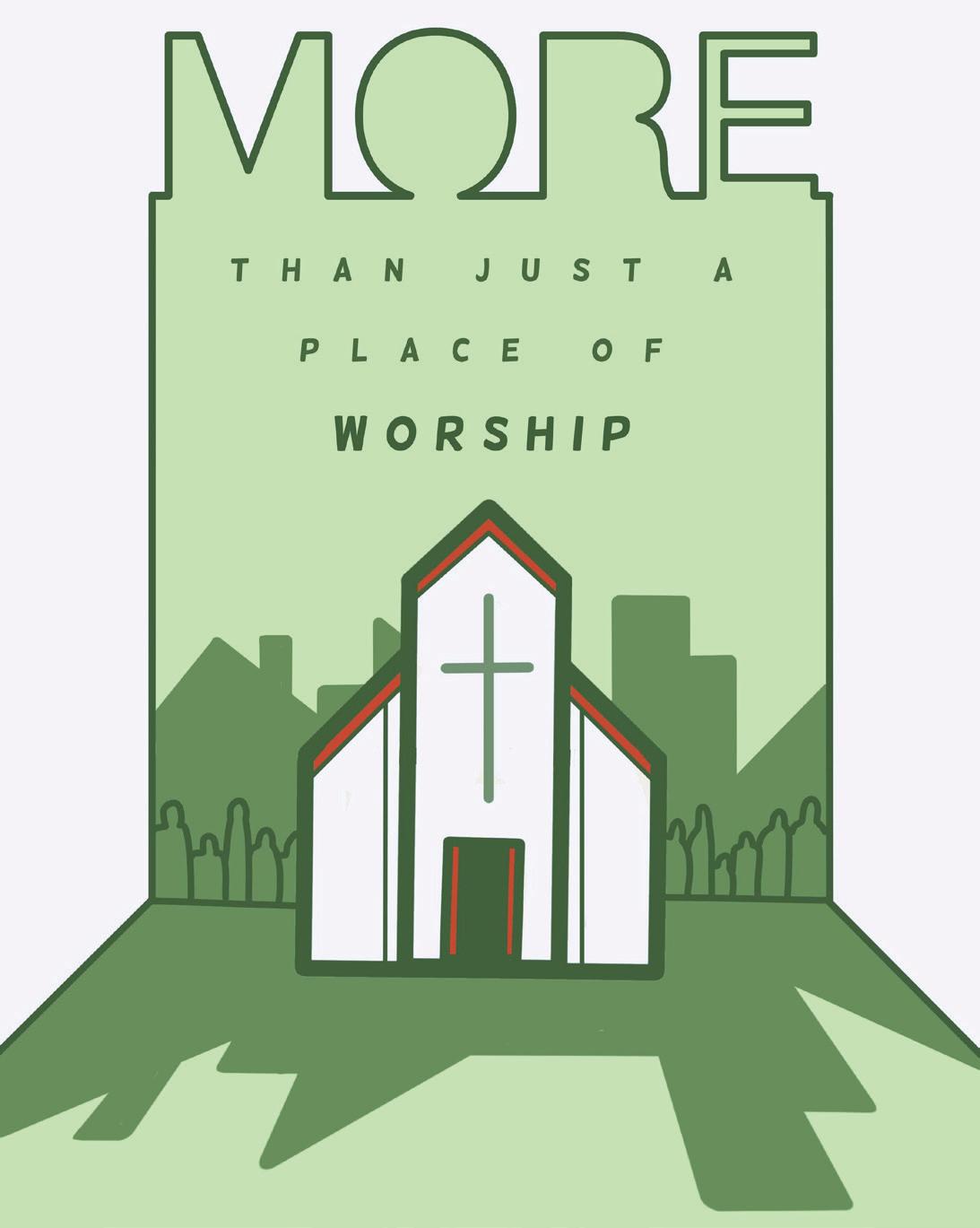
Bachelor of City Planning








More than just a place of worship: How can the presence of a church economically and
Places of worship, such as churches, have been integral to the lives of local communities since the colonisation of Australia. Yet, in the past few decades, census data and social research have revealed that society has become increasingly secular and less likely to the decline in worship attendance has become a worrying trend for worship spaces like churches, temples and mosques and their respective communities, as many argue they may cease to exist if something does not change soon. This thesis investigates the ‘value’ churches provide to their local community: socially and economically. It to the local community made by the

in the community for purposes other than spiritual gain as perceived by its congregational members, views from local businesses whose activity may be positively or negatively impacted by the church or other places of worship, and a church leader’s personal perspective gained through an interview with a
uncover greater insight into the broader role that churches can play in their local community. These results aim to also strengthen existing church-local community relationships and place a greater emphasis on all places of worship to be included in future planning decisions and strategic planning documents.







“… distributional disparity implies a need for purposeful policies that facilitate higher-density mixed-use developments to better address multi-generational housing challenges…”




Bachelor of City Planning







Australia’s urban density has been on the rise. Most recently, multi-generational living has also become increasingly popular in the country’s major cities such as Sydney and Brisbane. Nonetheless, multi-generational living is still most commonly found in single detached dwellings among outer-ring suburbs. In contrast, Sydney’s Eastern Suburbs, are also where occupancy rates are relatively low and multi-generational households are under-represented. This distributional disparity implies a need for purposeful policies that facilitate higher-density mixed-use developments to address multi-generational housing challenges in a compact city. A mix


of primary and secondary research methods, including a literature review, quantitative data analysis, in-depth interviews with stakeholders, and evaluations of best-practice examples, are used to investigate higher-density accommodation options for multigenerational households, with a focus on the medium-density typology as a means to increase density in the Eastern Suburbs. While it is acknowledged that city-shaping professions play vital, albeit limited, roles in achieving the and adaptability as well as a proactive approach is required for planning to keep pace with a continually growing and ageing population.






“Since their inception, mandatory LPPs have sparked debate about the role of planners, politicians and the community in local planning decision-making.”




Bachelor of City Planning








Planning and Environment introduced a requirement for each local council in Sydney and Wollongong to establish an independent local planning panel (LPP). The stated objectives of the LPPs are to consider certain contentious local development applications, make planning decision-making more transparent, consistent, less political, and reduce risk of corruption. Since their inception, mandatory LPPs have sparked a debate about the role of planners, politicians and the community in local planning decisionmaking. This thesis seeks to investigate


of the Hills Shire Council. The case study of the Hills Shire Council is of particular interest due to the Council’s vocal opposition to the introduction of mandatory LPPs. The tensions in urban governance between major stakeholders is framed and explored through a literature review, interviews with relevant stakeholders and analysis of development application determination data. This analysis aims to determine whether LPPs improve planning decision
recommendations to improve the operation of LPPs, and so assist the development assessment process.





“Findings from this thesis will provide understanding on current homelessness policy development and how strategies can be used to reduce and address homelessness.”




Bachelor of City Planning






It is evident that homelessness is an ongoing social issue within Sydney. The Australian Bureau of Statistics
homelessness rose by 27% in New South Wales between 2011 and 2016, while decreasing in other regions of Australia. To respond to this rise, some councils have implemented various measures which aim to reduce the rate of homelessness and support homeless populations within their local government area. However, there have been little to no studies which analyse with other councils. The purpose of this thesis is to assess the main role of City of Sydney Council and Parramatta City


Council, in addressing homelessness. The current policies and services established by each council will be taken into consideration. Comparison of their procedures will provide
are between how they respond to homelessness, and why these are the case. A review of relevant literature and in-depth interviews with planning professionals from both councils will also be undertaken to provide a comparison between theory and current practice. Findings from this thesis will provide understanding on current homelessness policy development and how strategies can be used to reduce and address homelessness.







“…planners must be pro-active in adopting a collaborative approach to creating outdoor gyms that can support a physically active lifestyle for citizens.”



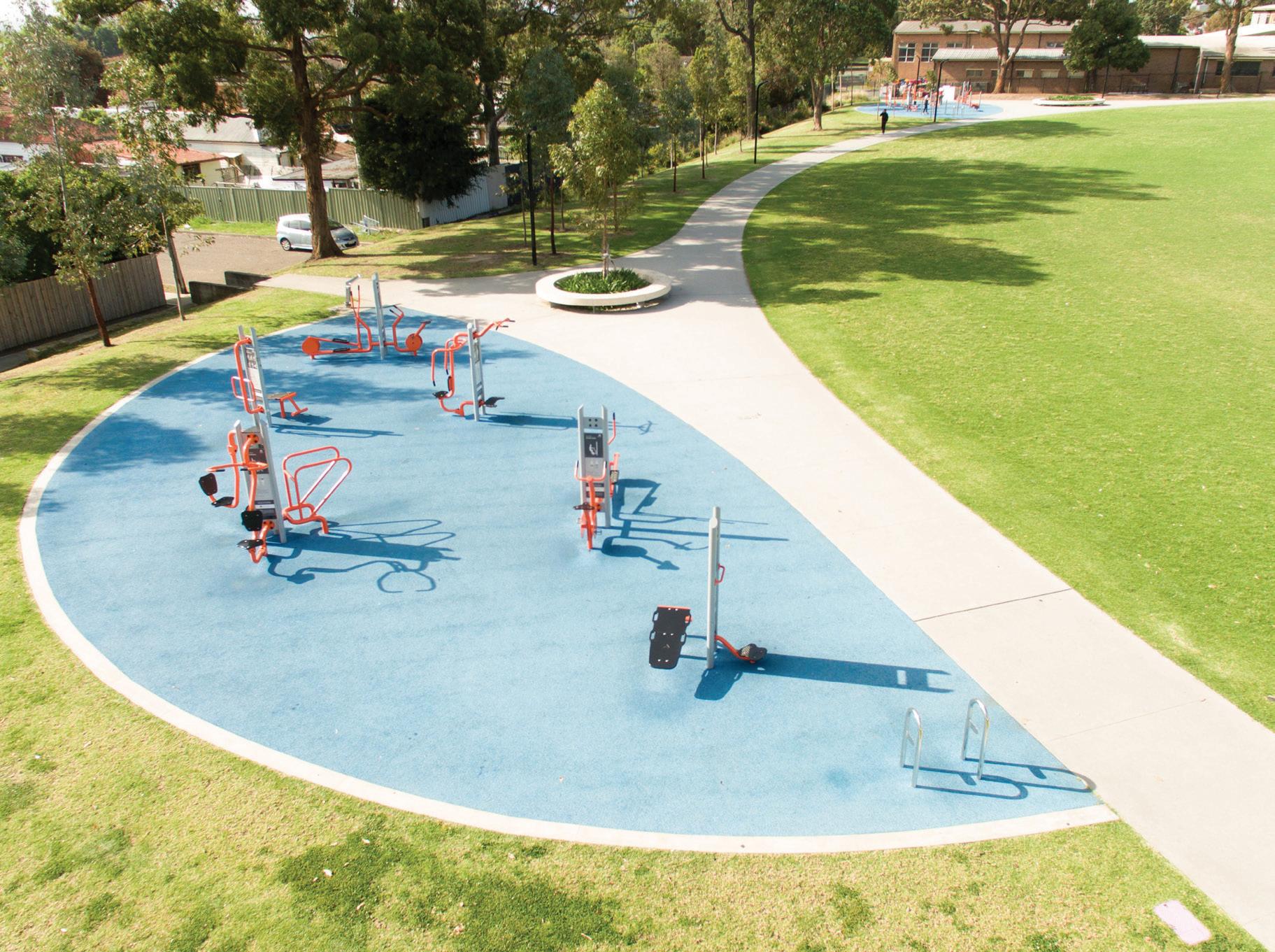
Bachelor
of City Planning






Health at the heart of planning: What are the key considerations to planning outdoor gyms to enhance physical activity and social connectivity in Western Sydney?
Physical inactivity is a leading risk factor of non-communicable chronic diseases. These are a product of sedentary distances, car dependency and the ubiquitous use of technology. Western Sydney faces these lifestyle challenges. Outdoor gyms provide an opportunity to combat inactivity and facilitate community socialisation. This thesis investigates the provision of outdoor gyms in Western Sydney, determining key characteristics needed to enhance physical activity and social connectivity. Through a qualitative study involving detailed environmental audits and indepth interviews with council planners, it becomes clear that site selection and


supporting facilities are key planning considerations for successful outdoor
with an analysis of crucial planning and design considerations found in academic and practice literature on outdoor gyms. The results indicate that planners must be pro-active in adopting a collaborative approach to creating outdoor gyms that can support a physically active lifestyle for citizens. Findings from the research and the audit instrument can be used to assist in the planning and provision of successful outdoor gyms that serve the health needs of local communities and in the broader context of developing recreational policies.







“This thesis aims to explore the planning strategies driving Rydalmere's successful night-time economy, a revitalised industrial precinct close to Parramatta’s CBD.”




Bachelor of City Planning






The
industrial
Sydney’s CBD and immediate surrounding suburbs have historically been recognised as the centre of the night-time economy in New South Wales. Unfortunately, much of the discussion in recent years has focused on the highly contentious lockout laws local businesses and closures of key night-time establishments. Fueling the often painted a glum picture of Sydney’s night-time economy. There are, however, areas in metropolitan Sydney and safe, night-time economy. For instance, Parramatta is experiencing a massive urban transformation with



transport infrastructure projects. State and local planning bodies acknowledge that developing an established nightlife district to satisfy the expectations of the thousands of new workers and residents in the area is vital to the success of Parramatta’s regeneration. This thesis aims to explore the planning strategies driving Rydalmere's successful night-time economy, a revitalised industrial precinct close to Parramatta’s CBD. This research project will explore through the existing literature and in-depth interview analysis from Sydney’s night-time economy experts and consultants, the role of industrial sites to develop a vibrant and connected night-time economy in Sydney’s second CBD.



“… legislative inertia has required the Land and Environment Court to progress… environmental planning law to adapt to climate change.”







Bachelor of City Planning







Coal mines are a major producer of greenhouse gas emissions and a chief cause of climate change. Despite this clear link, new coal mine developments in NSW are being assessed within a policy vacuum, with environmental planning legislation and instruments inadequately equipped to address climate change. Regardless, the NSW State government has, to date, remained passive. This context of legislative inertia has required the Land and Environment Court of NSW (Court) to progress the development of environmental planning law to adapt to climate change. This thesis investigates key Court cases concerning coal mine developments and


climate change and recent coal mine determinations made by the Independent Planning Commission (IPC). The thesis maps the progression of case law from judicial discussion of ecologically sustainable development and climate change as a requisite consideration for decision-makers, to the recent case of Gloucester Resources Limited v Minister for Planning [2019] NSWLEC 7 in which the Rocky Hill Coal Project (Rocky Hill) was refused partially on the grounds of climate change. In doing this, the thesis assesses the impacts of the Rocky Hill refusal and recent coal mine IPC determinations and postulates the future direction of the law in NSW.






“…universities and sporting policy can deliver more than




Bachelor of City Planning








Australians love playing sport, and documented to positively impact physical and mental health, increase workplace and academic achievement, and decrease incidences of chronic disease. This thesis explores built environment policy and social considerations in the development and management of university sporting infrastructure. The overarching aim is to encourage female participation in physical activity. The University of New South Wales Sydney is used as a case study.
A review of the literature and policy looks at barriers and motivators to female participation in physical activity. expectations with third place and

placemaking theory, proposing that, in the creation of sporting facilities at universities, the provision of the ‘third place’ needs to be fostered. In other words, universities and sporting policy can deliver more than just the physical space; they can deliver the place. Investigating women’s motivations and expectations for engaging in sport on a university campus needs to be unpacked holistically and within a broader and cross-disciplinary context that includes social and built environment theories and expertise derived from exercise science, public health, urban planning, geography and sociology. This thesis provides a new discussion point about university campus planning that encourages female participation in sport.






“Despite being the future custodians of the planet, young people’s legitimacy as advocates is constantly questioned on a global stage.”




Bachelor of City Planning








Young people are full of curiosity, passion and innovative ideas, yet they are one of the least consulted stakeholder groups in policy and planning decisions. Despite being the future custodians of the planet, young people’s legitimacy as advocates is constantly questioned on a global stage. Youth activism has a long history in tackling key issues in instances where young people are not given a say. This thesis investigates the culture of advocacy in young people and argues that the increasing prevalence of youth activism is a direct result of poorly designed or non-existent
public involvement processes in the city development process. Supported by expert interviews, case studies and a survey, this thesis explores future approaches to harness the passion held by young people and discusses
involvement reform that actively seeks youth participation. By empowering young people with decision-making abilities and a sense of ownership over what is happening in the world around them, the path will be paved with fresh perspectives and better outcomes that







“…in the 21st century, headlines scream of the retail apocalypse and a changing retail industry the department store no longer responds to.”




Bachelor of City Planning







department store, Le Bon Marche, in
landscapes and urban streetscapes. Representing a concentrated microcosm of urban life, the department store housed social, feminist, cultural and economic progressions and contributed to the transformation of modern retail practices and geographies. However, in the 21st century, headlines scream of the retail apocalypse and a changing retail industry the department store no longer responds to. In this environment the future occupancy, purpose and value of these retail tenancies remain unclear. Building upon a preliminary review of

archival, literature, and policy research, an examination of statistical data and input from professional practitioners, the research seeks to examine the extent to which the current planning framework
the operation of the department store sector and the broader retail industry.
research invites recommendations for how the planning framework can navigate the future of these tenancies to ensure the ongoing use and relevance of the spaces. A transformation in the way department stores are conceived, regulated and built is needed in order to save this cultural institution and continue its enduring legacy.







“This thesis questions to what extent Macquarie Park is equipped with enough restorative spaces for its workers.”




Bachelor of City Planning






In Australia, work-related stress is considered a major challenge to the wellbeing of workers and organisations. At the intersection of environmental psychology and urban planning, is the theory that spaces can restore and rejuvenate depleted physical, psychological and social resources to provide a healthy way to help workers stay happy and productive while in the workplace. On a trajectory to become the fourth largest CBD in Australia, Macquarie Park has grown faster in the past few years than any other employment centre in Sydney. This thesis questions to what extent Macquarie Park is equipped with


enough restorative spaces for its
exploration of restorative spaces through the coalescence of a wide range of literature, as well as exhibiting three local case studies of best-practice. This
a place mapping exercise which was conducted with workers of Macquarie Park, in conjunction with a behavioral geospatial recommendations for the provision of new restorative spaces and give planners agency to improve the wellbeing of the 45,000 people and counting who are employed in Macquarie Park.







… “strategic planning can improve regulation of the music festival industry and depoliticise decision making during the assessment process.”




Bachelor of City Planning






Development assessment processes, politicisation, and inconsistent decision
New South Wales (NSW) music festival industry. The absence of strategic planning, excessive discretionary power and unbalanced risk allocation economy of NSW. While the music wider Australian community, tighter government regulation and risk aversion tactics are hindering the music ecosystem. This thesis proposes that a multisectoral approach to strategic planning for the music sector can align government policy to improve regulation, address key issues, establish


priorities and achieve a common vision for the music festival and event industry. This research utilises an in-depth policy and regulation analysis, literature review, development application audit and best practice case studies to
assessment and planning. The aim of this research is to demonstrate how strategic planning can improve regulation of the music festival industry and depoliticise decision making during the assessment process. The purpose the planning system, promote greater certainty and consistency in decision making, to ensure that the music sector of NSW.




“…what is the role of autonomous vehicles in the future of transport for cities?”







Bachelor of City Planning






Fully autonomous vehicular technology (AVT) is becoming more advanced and bringing with it the potential to reshape cities as we know them. Literature
promoting the car share economy and in turn reduce overall car ownership, lower vehicle emissions, improve road safety and lessen the need for parking infrastructure. However, there remain concerns that AVT will create tensions with transport-oriented development (TOD). This research asks the question, “what is the role of autonomous vehicles in the future of transport for cities?”


Planning can take a proactive approach
technology and prepare the city for the inevitable mass proliferation of AVT. Australian cities have acknowledged
infrastructure and in response cultivate a synergy between AVT and existing systems such as light and heavy rail. This thesis undertakes a discourse analysis and literature review to identify the role that AVT will play in the future of transportation. By taking pre-emptive action in the form of planning policies, areas such as the car-share economy could be utilised to provide improved forms of transportation that do not rival TOD but rather operate in harmony within existing frameworks.







“…creative quarter in Parramatta as a spatial planning focus linking existing and future cultural assets at a city-wide scale.”












A proposal for securing the future of the Roxy Theatre, Parramatta
Parramatta as the ‘Central River City’ envisaged by the Greater Sydney Commission is currently undergoing rapid investment. There is a need to address the city’s limited cultural facilities. One way forward is to develop a creative quarter in Parramatta as a spatial planning focus linking existing and future cultural assets at a city-wide scale. Parramatta’s cultural facilities are currently limited to the Riverside Theatre, the future relocated Museum of Applied Arts and Sciences, and Eat Street. The heritage-listed Spanish mission-style Roxy Theatre (1930) has languished for years. A recent proposal to redevelop the site with a 33-storey building to include commercial and

entertainment uses has proved very controversial. This thesis explores this contentious development application within the broader strategic framework, consideration of urban cultural policy aspirations, and the constraints of state heritage listing. It draws upon the history of picture palaces in Australia, attendance at the 2019 Land and Environment Court hearings and indepth interviews. The importance of this research is to contribute to strategic thinking for Parramatta City through linking historical status of the Roxy in the history of Australian cinemas, to the promise of developing a new creative quarter around it to successfully balance public and private interest.



housing could be erased the suburban landscape.”







Bachelor of City Planning






The postwar reconstruction boom had
landscape, introducing new housing styles and materials such as brick veneer
stock is reaching the end of its economic life, being knocked down and replaced with new larger and contemporary style housing that remarkably alters the character of the streetscape. Research previously conducted on knock- downrebuilds across Sydney estimates that nearly half of the houses demolished were from the immediate postwar period. Considering this rate of demolition,


era of Australian housing could be
erased from the suburban landscape. It appears that housing from the postwar period is often overlooked for heritage listing by both the community and local
speculation, this thesis will investigate current attitudes towards postwar housing in the local government areas
from the perspective of Council. The research includes a review of academic literature, an audit of each LGA’s heritage schedules and interviews with local government heritage planners and heritage consultants. This thesis aims to highlight the importance of postwar housing in the Australian landscape.




“What would a life be without music? What would the city be?”







Bachelor of City Planning








What would a life be without music? What would the city be? Despite our universal need for music, live music has been decaying in our cityscapes. Arguably, Sydney is not as lively as what it was 20 years ago and since the introduction of the lockout laws in 2014, Sydney has experienced a 40% drop in live performance revenue in Sydney’s CBD and 176 venues ceased operation where the laws applied. This music ecology and its contemporary urban challenges. This thesis establishes

the interrelations of live music ecology to popular urban policies, such as creative city and night-time economy strategies, to gain a place in future city development. While literature focuses on ‘harmonising’ or downplaying negative impacts of live music, this thesis aims to examine and exalt the positive impacts a live music industry can bring to a city. I explore Marrickville as an in-depth case study in a combination of existing contemporary theories to demonstrate the possibility to foster the decaying live music ecology.



“Connecting people and places is at the core of city planning.”







Bachelor of City Planning







Connecting people and places is at the core of city planning. Recently, Sydney has experienced a growing trend in the number of Chinese migrants settling in high-density living developments. Research shows that Chinese migrants tend to live in highdensity areas of Sydney rather than traditional detached houses that many Australians prefer. From a planning perspective, it is important to note that the development of high-density living in Sydney does not only act as a strategic way to accommodate a growing population, but also an opportunity for planners to provide a place that facilitates Chinese


migrants’ positive sense of home. This housing familiarity enables them to feel included and part of the city. This thesis explores the concepts of home and social cohesion through qualitative research methods: a literature review, discourse analysis, a case study with a place audit in Burwood NSW, and importantly, the lived experiences of Chinese migrants gathered through in-depth interviews. This thesis seeks to understand the personal and social experiences of Chinese migrants and to provide recommendations for local planners to foster social cohesion in high-density Chinese communities in Sydney.






“The research aims to determine the extent to which green walls can attain their perceived economic value and identify potential implementation of green walls in Sydney.”




Bachelor of City Planning







Council released its Sustainable Sydney 2030 development plan outlining the city’s commitment to solve a series of environmental and social problems using sustainable development guidelines.

to improve sustainability in Sydney environmentally, socially and economically. The research aims to determine the extent to which green walls can attain their perceived economic value and identify potential implementation of green walls in Sydney. This thesis focuses on two research questions: What is the

economic value of green walls? Do green walls in Sydney achieve their perceived economic value? A literature review informs the concept of green walls and their economic value in sustainable design terms. A case study of One Central Park analyses and examines the economic value of the project through quantitative methods supported by in-depth interviews that unpack advantages and limitations and future development of green walls. The discussion and conclusion explore whether the economic value of green walls could reach their perceived economic value in Sydney and overall contribution of green walls in the Sydney sustainability plan.






“…there has been little discussion on design or planning




Bachelor of City Planning






Plan International has found that 92% of women feel uncomfortable taking public transport alone at night, while other studies have shown that fear
patronage and deter the use of public transport by women. As the New South Wales (NSW) Government expands railway infrastructure as part of the public transport network, concerns about women's personal safety in train stations have become increasingly relevant. While the Crime Prevention through Environmental Design (CPTED) guidelines were adopted in the NSW planning system, numerous studies


providing guidance to developers, design professionals and local authorities
designing or assessing development proposals. Furthermore, there has been little discussion on design or planning safety needs of women. This thesis
the use of design and technological measures in response to the personal safety concerns of female transit users. Focusing on Sydney’s railway stations, Chatswood and Central Stations were chosen as case studies. Fieldwork consisting of walking and in-depth interviews, were used to study women’s experiences within the railway station environment. A series of recommendations are presented to enhance women’s safety and security in Sydney’s transit environment.




contribute to an interactive, joyful and inviting public space.”







Bachelor of City Planning








Public art is more than just a visual attraction in the public realm – it also stimulates the imagination and contributes to the quality and experience of city life. Many studies have shown that the success of integrating art in public development, urban regeneration and tourism. However, there is limited research on city planning relating to human interaction with public art. Using Sydney’s Vivid Festival of Lights, Music and Ideas, this thesis studies the extent to which public art animates people’s senses, behaviour and use of public space. The study utilises a mixed methods approach – including

literature review, discourse analysis, multiple observations of three artworks and semi-structure interviews with artists, curators and event professionals. The study presents evidence of the public interaction with art installations and analyses the relationship between public art and public space. As a result, it indicates that, although temporary, the Vivid’s art installations do animate city by stimulating senses and encouraging interaction. The results reinforce the social function of art in the public realm. how art installations can contribute to an interactive, joyful and inviting public space.






“This thesis investigates the gap between academic research and practical outputs on measuring planning cycling infrastructure.”




Bachelor of City Planning






Healthy planning strategies can
communities, where lack of physical activity is on the rise. One such practical initiative is to promote active commuting behaviour through cycling; an active sport whose popularity is rising with increased active travel. Recent academic research indicates the need for cycling infrastructure, however, real-world implementation has yet to meet the brief. This thesis investigates the gap between academic research and practical outputs on measuring planning cycling


infrastructure. The thesis investigates


infrastructure implementation sourced from an in-depth literature review on best practice. A detailed process of implementing an actual cycling project is presented here, hence, a comparison of practical and theoretical research will be explored. This thesis concludes with recommendations for improving the cycling experience and the positive implications of an active transport framework in the city.





“Since 2011, the City of Sydney developed a network of green roofs and installed more than 100 in the council area.”




Bachelor of City Planning






The rooftop garden, or green roof, is a purposefully designed, natural, and human-usable architectural feature consisting of greenery and able to provide shelter from the elements; a concept that originated thousands of years ago. Today, these features are less recognised as architecturally
features that have environmental, green roof design has responded to urban environmental issues such as protection and high carbon emissions. Economically, green roofs can increase the value of a commercial and residential building and enable developers to carry out high-density




development on a narrow land plot. Socially, green roofs provide vastpocket space for social interaction and leisure activities such as chatting and relaxing. Since 2011, the City of Sydney developed a network of green roofs by installing more than 100 in the council area. This research investigates through post-occupancy evaluation whether the to the occupants in one case study residential building. Through interviews and the review of existing green roofs policy and installed green roofs projects,
extent to which the installed green roofs meet the occupant’s demands, and what the developer can do to improve the occupants’ using experience.





“The vertical green wall system could be one solution to address environmental issues that plague the growing population of Sydney.”




Bachelor of City Planning






have experienced exponential growth in population and scale. Roads have
congestion and, as a result, urban air quality is becoming worse than ever before due to the increasing and high-rise buildings. Sometimes viewed as unavoidable development


urban areas, these built environment responses to population growth come at a cost. Many green open spaces and other recreational areas within our urban landscape have been replaced with residential and commercial developments to cope with economic,

housing and social demands. The vertical green wall system could be one solution to address environmental issues that plague the growing population of Sydney. A solution based in ecologically sustainable planning, the vertical green wall system is a living vegetation wall installed vertically on a building’s surface providing an aesthetically pleasing landscape and a more sustainable environment in urban areas. This research uses literature review, case study, and in-depth interviews to evaluate the vertical green wall system and determine the extent to which it is a solution that can address Sydney’s urban environmental issues.













































challenging courses that Master of City Planning students complete in their degree at UNSW. It represents an intensive ten-week investigation of a major planning issue as the capstone of their two-year program of postgraduate study. This thesis is an independent, self-generated study which enables students to integrate many
through various forms of data analysis to careful consideration of practical strategic and statutory


policy documents and websites are scoured for relevant information.
On behalf of the students I extend sincere thanks to the numerous people who contributed to the Planning Thesis course this year: notably, the individual supervisors and examiners drawn mainly from colleagues in the Planning Program and City Futures Research Centre.


So twice a year - terms one and three starting in 2019 - a great number of in-depth interviews and surveys are completed, reams of quantitative data are collected and analyzed, and huge numbers of academic articles, books,
I would also particularly like to collectively thank the many people who participated in student interviews and surveys. This is invaluable input and our interviewees – some of them almost ‘regulars’ because of their standing in thought.
Master of City Planning

the postgraduate thesis course. With students





coming from a wide range of backgrounds and academic pathways, it is not surprising that their topics are similarly diverse in nature. They range across many subjects: from high-density living, climate change, walkability and open space, to community health, lockout laws, activation of street frontages and urban renewal.
Collectively, the theses tell us much about the backgrounds and interests of our students, as well as the challenges and opportunities
About a third of our masters students are from overseas, a much higher proportion than in the undergraduate program.


While most students understandably begin the Planning Thesis course with some trepidation,
achievement and a highly sophisticated understanding of their topic. The whole experience from devising a project to carrying it
inevitably surface along the way, undoubtedly enhances their expertise and resilience for the successful professional careers that now await them.


Professor Robert Freestone MCP Course Convenor (PLAN7149)





“Bonnyrigg Living Communities Project experience yields fundamental lessons ... the study helps identify certain opportunities to adapt the PPP model for greater suitability to estate renewal.”










Australia has been experiencing a shift towards neoliberal governance approaches for more than two decades, thus giving rise to certain kinds of collaborative arrangements like publicprivate partnerships (PPPs). This thesis starts with an exploration of the fundamental features of various partnership models in estate renewal and their evolving governance structure.


weaknesses of such partnerships with particular emphasis on the Bonnyrigg project (BLCP) in southwestern Sydney
to apply the PPP model in the renewal of a public housing estate in Australia) and the recent ‘Communities Plus’ model. Inquiry is driven by several
were encountered in BLCP and how were they related to the governance


the purpose of estate renewal? To what extent can the BLCP experience yield fundamental lessons on the appropriateness of PPP models for estate renewal governance? Seeking to better understand the emergence and operation of these arrangements, the research draws on interviews involving diverse stakeholders with direct experience– or expert knowledge– of public housing estate renewal. Certain opportunities to adapt the PPP model for greater suitability to estate renewal





“There is a lack of systematic research on the nature of industry












Scholarly and policy literature has endorsed economic heterogeneity as critical to urban vitality with urban mix strategies widely advocated as a planning tool in the west. In central Sydney, mixed-use planning principles are now widely advocated to support the development of a diverse, and livable central business district (CBD). However, there is a lack of systematic research on the nature of industry mix
urban settings. This thesis approaches the issue with a perspective of industry mix and its change over time. It reviews urban development and policies in Sydney CBD to document how urban


form has been shaped. A case study is conducted using data from City of surveys in 2006, 2011 and 2017 to explore the economic and spatial characteristics of the industry mix. The thesis considers the spatial-economic linkages argued for in planning policies in exploring the ‘what,’ ‘how’ and ‘where’ of mix. The aim is to develop a more integrated planning tool to improve urban vitality and create urban innovation districts that support the development
This research discusses implications for developing active approaches to monitor and manage urban heterogeneity.





“For culturally dynamic cities, the social function of heritage conservation is an invaluable resource that can revolutionize urban experiences.”












A function of heritage conservation that is becoming more prevalent in the face of rapid urbanization, globalization and development is the power to help residents see themselves the city around them. For culturally dynamic cities, the social function of heritage conservation is an invaluable resource that can revolutionize urban experiences. Yet the marginalization of certain communities has persisted
environment. This is especially true of urban Indigenous communities. This study examines the failings of the planning system in addressing Aboriginal heritage in Redfern in inner Sydney. It
the urban heritage of this historically


from European heritage and this how this inhibits the protection of Aboriginal heritage. The thesis endeavours to unveil the systemic marginalisation of the Indigenous community through analysis of place narratives that stem from heritage conservation practices. Additionally, it discusses discrepancies in protecting themed heritage over nuanced heritage and investigates the reasons behind selective conservation. In the
discussion on how to reconcile these issues into the future.





“Build-to-rent housing ... can provide an enhanced tenant experience with bundled services and security of tenure, while achieving a more sustainable built form than traditional build-to-sell housing.”










With renting on the rise and a societal shift towards a subscription-based lifestyle, there is a rare opportunity to rebrand the rental experience as a convenient, sustainable and accessible way to live. Build-to-rent housing (BTR), where apartments are designed and built an enhanced tenant experience with bundled services and security of tenure, while achieving a more sustainable built form than traditional build-to-sell housing. While the BTR sector is well established in Germany, the USA and the UK, market and policy conditions in Australia


Precedent sectors such as university mainstream private-rental product is yet

to be established. Recent commentaries barriers holding the sector back, resulting in an industry push for government touch on the potential for BTR to provide superior sustainability, tenant and public outcomes to traditional build-to-sell development. This research utilises a case-study approach to investigate the sustainability, tenant and public developments (with a focus on the Sydney market). In-depth interviews with industry experts are also undertaken to determine the appetite for providing superior sustainability, tenant and public outcomes.






“Kings Cross nightlife has been a feature of Sydney popular culture since the beginning of the last century.”












Kings Cross nightlife has been a feature of Sydney popular culture since the beginning of the last century. Nightclubs, bars and even cafes distinctively enrich the nightlife of the precinct. And the thriving nightlife has increased vitality, as well as promoted economic development. However, the rising incidence of alcohol-related violence has challenged Kings Cross’s security. The state government’s 2014 lockout laws were introduced in this context. While its implementation in the Sydney CBD and Kings Cross reduced assaults, economic indicators have experienced a downturn. To revitalise the night-time economy, the lockout laws were reviewed in 2019. New reforms proposed to remove lockouts

in the Sydney CBD but excluded Kings Cross for twelve months. Given the direction of the 2019 review, attracting small and medium music or arts entertainment venues in Kings Cross night-time economic development. This thesis studies the cultural development history of Kings Cross; examines lockouts history in Australia; considers the 2014 lockout laws and its 2019 review; surveys residents, customers and businesspeople; reviews related literature; and looks to Yokohama and Amsterdam for inspiring economic redevelopment solutions in exploring future night-time economic development directions in Kings Cross.






“Lakemba displays a strong community presence, providing a ‘home away from home’ where migrants and However, the character of this locality is threatened.”












To meet the needs of Sydney’s rapid growth, the NSW Government has committed to supplying the infrastructure needed to service a larger metropolitan population. As part of this, a new metro service between Sydenham to Bankstown is a major infrastructure commitment. The government has also exhibited a complementary urban renewal strategy for existing suburbs along the metro corridor, proposing changes to current land use and built form controls that would incorporate an additional 35,000 dwellings. The thesis investigates the potential impacts of these proposed changes on Lakemba – one of the most ethnically diverse, but socio-economically disadvantaged
areas in Sydney. The thesis draws on submissions, and interviews with key stakeholders. It determines that despite being one of Sydney’s poorest suburbs, Lakemba displays a strong community presence, providing a ‘home away from
support and create shared experiences. However, the character of this locality is current form, the urban renewal strategy will irreversibly dismantle communal migrant networks and promote


a need for a more inclusive urban renewal approach for Lakemba.





“This research explores the extent to which local character policy works to achieve the strategic objectives of local government.”










planning approvals process, and more broadly within the New South Wales (NSW) planning system. Local character is referenced in both strategic and statutory planning contexts to capture the physical and social composition of a locality, and typically embodies a perceived integration of these elements. In NSW, the formation of development standards by a consent authority to maintain and reinforce local character is not mandated. Recent amendments to the NSW Environmental Planning and Assessment Act 1979 aim to rectify this with the creation of Local Strategic Planning Statements, which indirectly include provisions for Local Character


Statements. The amendments to the Act and the associated development of new policy documents present an
of local character in the NSW planning system and its role in supporting growth. This research explores the extent to which local character policy works to achieve the strategic objectives of local government. Informed by interviews with planning professionals and a review of existing literature, the research investigates the challenges associated with retaining existing or creating local character while achieving growth. The discussion and recommendations will assist planning professionals in forming







“It is surprising that active street frontages have not received more critical and policy attention, given the prominence of higher density housing in the strategic vision for Sydney.”



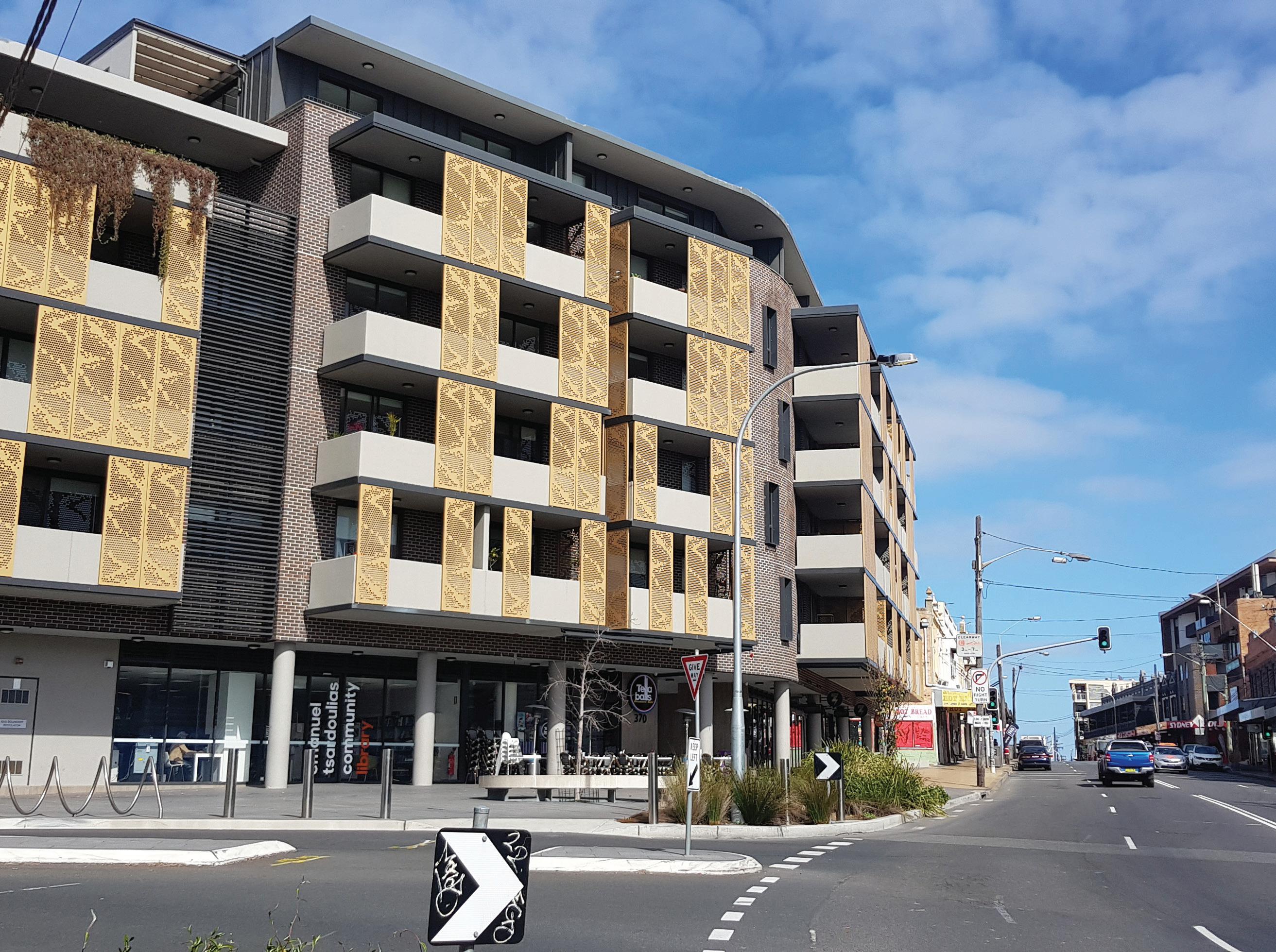








‘Active street frontage’ provisions have been a focus of many planning policies around the world. The rationale is that clustering commercial premises adds a sense of safety, community and vibrancy to public space. Street level commercial spaces provide access to goods, amenities, local employment and economic activity. It is surprising that active street frontages have not received more critical and policy attention, given the prominence of higher density housing in the strategic vision for Sydney. In response to that research gap, this thesis explores the implications of new mixed-use developments for
street activation, focusing on Sydney’s on mixed methodologies through a literature and policy review, in-depth
spaces in new mixed-use developments. The study concludes that active street frontage provisions are at times counterintuitive to the policy objectives and require a more critical and uniform approach in local planning policies. The designs highlights examples of spaces which could be detrimental to street activation and the ongoing vitality and viability of local centres.







“The continuation of dark roofs is largely aesthetically driven, occurring in the context of poor consumer awareness, a riskaverse development market and a policy environment that fails to suitably address urban heat.”










Extreme heat is Australia’s deadliest natural hazard, and its severity is only expected to worsen due to climate change and the urban heat island
change and urban heat through the built environment is understood at all levels of government in Australia. One simple and otherwise known as cool roofs. While widely reported, they continue to be an exception to the dominance of very areas such as Western Sydney. This



within the planning and residential development sectors that lead to the continued delivery of a built form at odds with the widespread acknowledgement that urban heat must be addressed. This research indicates that the continuation of dark roofs is largely aesthetically driven, occurring in the context of poor consumer awareness, a risk-averse development market and a policy environment that fails to suitably address urban heat. The research points to the need for regulation to address poor urban heat outcomes in widespread support for policy change from consumer, developer and local planning actors.






“Planning for children friendly apartment living is planning to cater for the changing needs of family with children (both young and older) in ways that overcome the ‘social trap’ experience.”



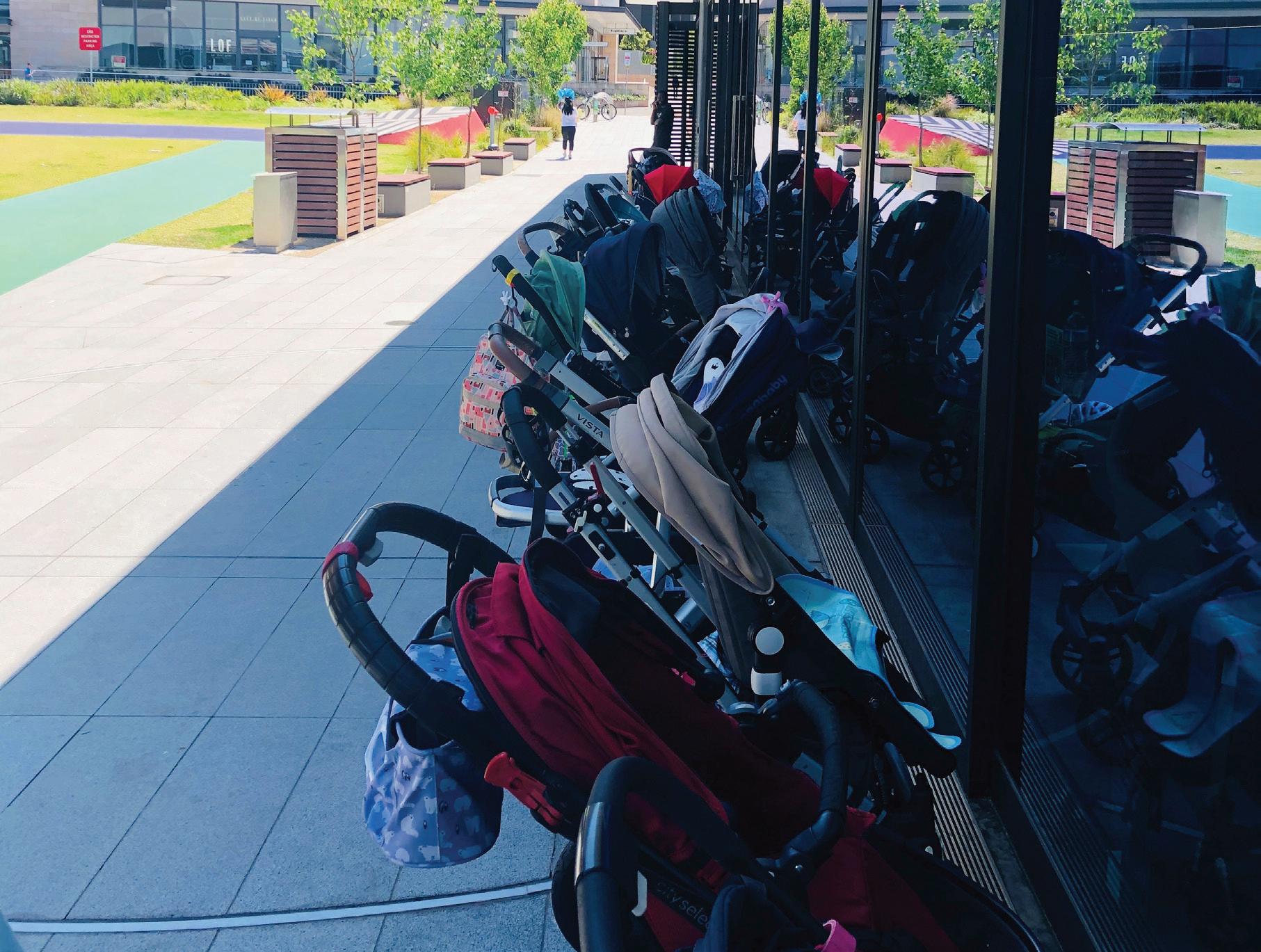








With more and more children living in apartments in Australia, planning for apartment living needs to shift from single and aging population-focused to family with children-oriented. This study examines the current gap between planning for children and planning for high density living in the NSW planning system. It tests the concepts of “social trap” and “children friendly cities” as described by Paul Tranter and Brendan Gleeson respectively that apply to the social alienation and freedom to play that parents and children are experiencing in the denser urban environments. Using the Rhodes urban renewal project in Sydney as a case study, the thesis investigates the living experience of families
with children in a high density urban environment in relation to children’s independent mobility, social interaction and neighbourhood design. It draws from a literature review, online and families with children and planning
‘social trap’ experience applies more to children and less to parents in high density apartment living environments. Planners should be aware that planning for children friendly apartment living is planning to cater for the changing needs of family with children (both young and older) in ways that overcome the ‘social trap’ experience and promote a stable community with choices for families with children.



“Indoor and outdoor communal spaces within apartment buildings are found to be ‘social catalysts’ that enable residents to establish social interaction.”

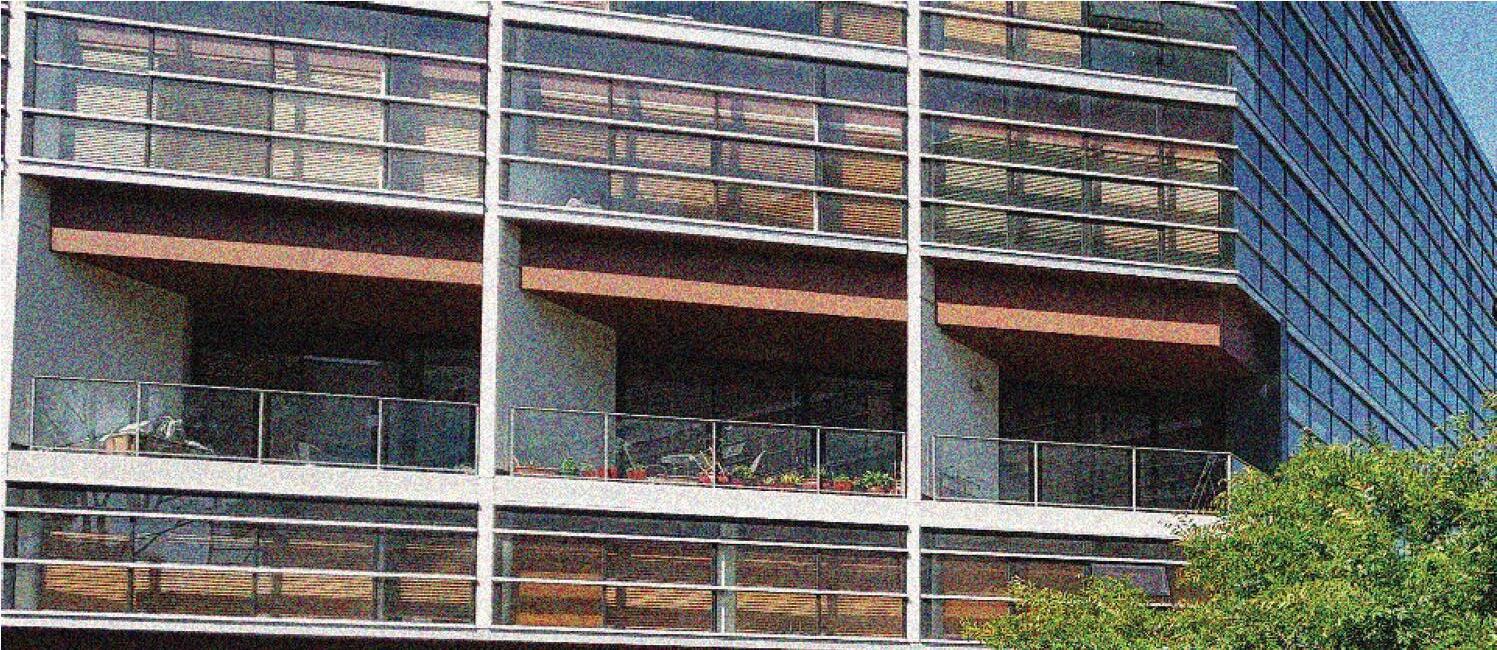





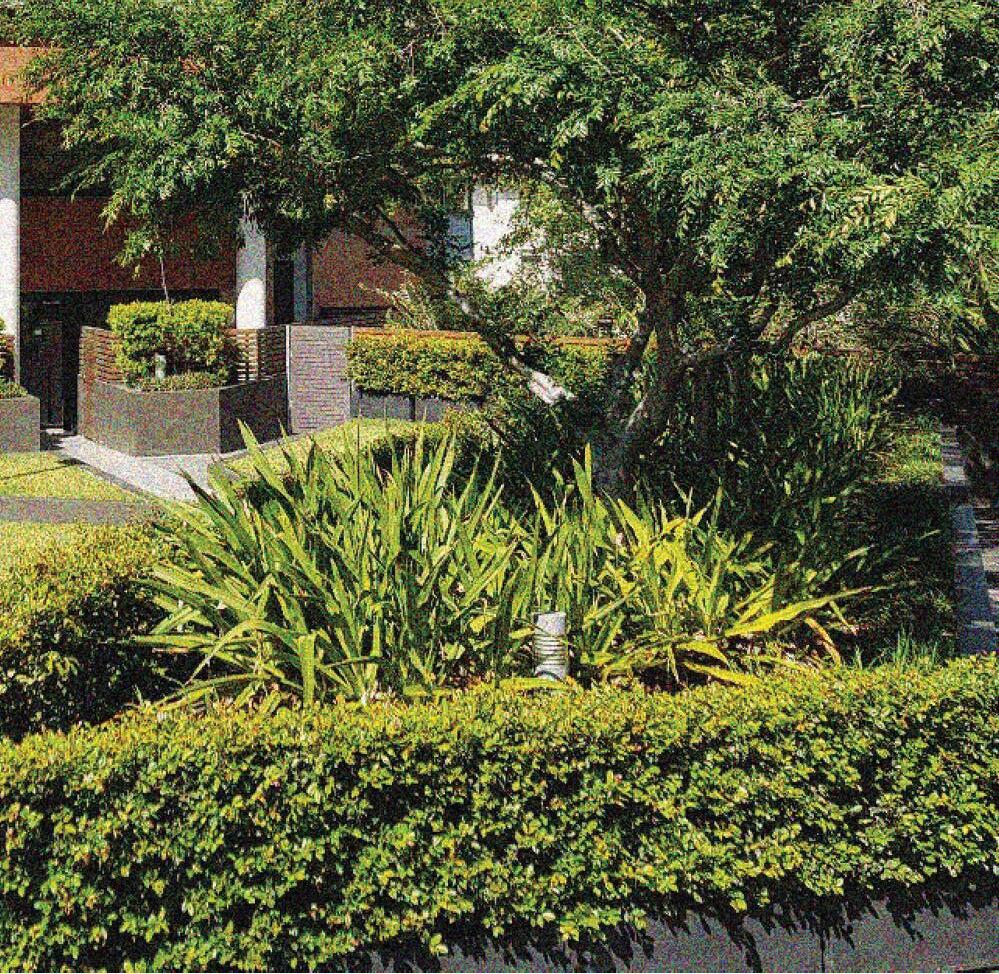







Sydneysiders are increasingly turning to higher density living to provide for their housing needs. Simultaneously, associated social problems such as loneliness and social isolation have become increasingly prevalent. In comparison to lower-density forms of living, recent commentaries have suggested that apartment dwellers current living arrangements, and less likely to form social interactions with their neighbours. Indoor and outdoor communal spaces within apartment buildings are found to be ‘social catalysts’ that enable residents to establish social interaction. Yet, that is heavily reliant on diverse factors, including frequency of usage, positioning and

apartment residents in several Sydney suburbs reveal that the perceived quality and frequency of communal spaces
interactions. Interviews with industry professionals reveal that the positioning and spatial layout of communal space does likewise. This research utilizes a case study approach to examine the relationship between the spatial and physical features of communal spaces within apartment buildings and social interaction among the residents. Indepth interviews with current industry professionals are also undertaken to determine how planning policies impact on the design of communal spaces and hence social interaction.







“Xiong’an New District is the product of the Chinese Government's intention while promoting the ‘self-organizing’ of the new district within a ‘thousand years plan’.”












This thesis explores the social problems in Beijing and the responsiveness to them of Xiong'an New District. With the expansion of city scale, the population in metropolitan cities keeps increasing so that the population density of Beijing far exceeds the carrying capacity of the land. In 2016, in order to alleviate the problems arising from sustained development, Beijing proposed a ‘’one-axis and two-wing ‘’ strategic plan. Xiong'an New District was conceived as easing the high-density population of Beijing by accommodating surplus

educational and health resources in Beijing and developing high technology to upgrade the regional economy of northeast China. Existing research demonstrates that decentralisation is the self-organization of the city, a process shifting from disorder to order. Xiong’an New District is the product of the Chinese Government's intention while promoting the ‘self-organizing’ of the new district within a 'thousand years plan'. This thesis considers how government decisions and urban selfin the planning of future new districts.






“Strategies of climate change in Sydney need improvement and community engagement can better achieve shared responsibility.”










In NSW, the average temperature steadily increases 0.7 degrees every year. The average duration of heatwaves has reached 3.5 days. Rainfall patterns have become abnormal. Extreme weather events are exponentially increasing. Governments are concerned about such attributes of climate change and are struggling to mitigate their impacts. Policy frameworks, strategies and actions, with an array of supportive


levels of government. In this thesis, a literature review of climate change strategies is conducted to inform the current approach in Australia. Case studies of Guangzhou, Tokyo and New York City constitute comparative
studies which highlight distinctive features of their countermeasures to climate change. A survey in Sydney’s eastern suburbs was also conducted to investigate issues around community awareness and attitudes to climate

adaptation strategies. Findings reveal that the strategies of climate change in Sydney need improvement and community engagement can better achieve shared responsibility. The results show that current strategies change and that there is still space for improvement with new technologies and tactics.



constitute risks for investment failure.”













Chinese developers have purchased almost half their land for residential purposes in recent years. Unfortunately, they are facing economic and political issues that deeply impact on these investments. The cooling down of the
from China; unfamiliarity with the local industry environment; and the decline of Chinese customers all constitute risks for investment failure. This thesis analyses these problems and counterstrategies, and aims to demonstrate the expensive and complex design approval procedures of the Australian planning system. The thesis considers


prospects for better cooperation to attain sustainable development goals.
interviewing industry experts and review of academic papers, newspapers, and professional reports are used to analyse property market demand, supply, funding strategy and problems. The research points to negative industry forecasts. The thesis reviews many factors and reasons why Chinese developers enter


could help Chinese developers make more considered decisions and convey their opinions about the planning system to suggest institutional reform.





“The analysis shows that while Melbourne places health as a top priority for its neighbourhoods, Sydney’s strategic plan does not prioritise health and well-being of residents at a local level.”










The average daily travel time in Sydney is increasing due to increased population and the consequent geographic expansion to accommodate Sydney’s growth. Increase in daily travel time has been linked to negative stress, short sleeping times, reduced time for physical activity and overall decline in well-being. 20th century transport theories show that humans throughout history have functioned on the basis of an average 60-minute daily travel budget. This theory has been modelled into the 30-Minute City and the 20-Minute Neighbourhood concepts in Sydney and Melbourne respectively and adopted in their strategic plans.




This thesis explores the relationship between health and travel, analyses the 30-Minute City and the 20-Minute Neighbourhood plans, and evaluates them against key health considerations. The analysis shows that while Melbourne places health as a top priority for its neighbourhoods, Sydney’s strategic plan does not prioritise health and well-being of residents at a local level. The explanation of the relationship between health, travel and urban form, and the understanding of Melbourne's 20-Minute Neighbourhood concept can
help evolve the 30-Minute City concept to incorporate key aspects of healthy and inclusive planning.


through physical and mental health, providing individuals with a connection to nature and produce.”













and mental health, providing individuals with a connection to nature and produce.
foster new community networks. However, there is little research about how local governments use them to build social capital. This thesis presents an analysis of community gardens across Greater Sydney with regard to social capital. A qualitative study of four community gardens in the Canterbury Bankstown City Council (CCBC) local government area was conducted, located in Lakemba, Chester Hill, Croydon, and Bankstown. Interviews


with users, coordinators and Council representatives were undertaken to identify the experiences and issues
using community gardens especially through connections with other residents. The reasons for involvement


new networks of relationships within the CCBC area. Involvement in Council
programs has encouraged many incidental interactions and helped create a positive attitude within surrounding neighbourhoods.





“As global megacities undergo rapid economic growth and experience various disease and well-being issues, a focus on urban health is increasingly essential for sustainable economic development.”



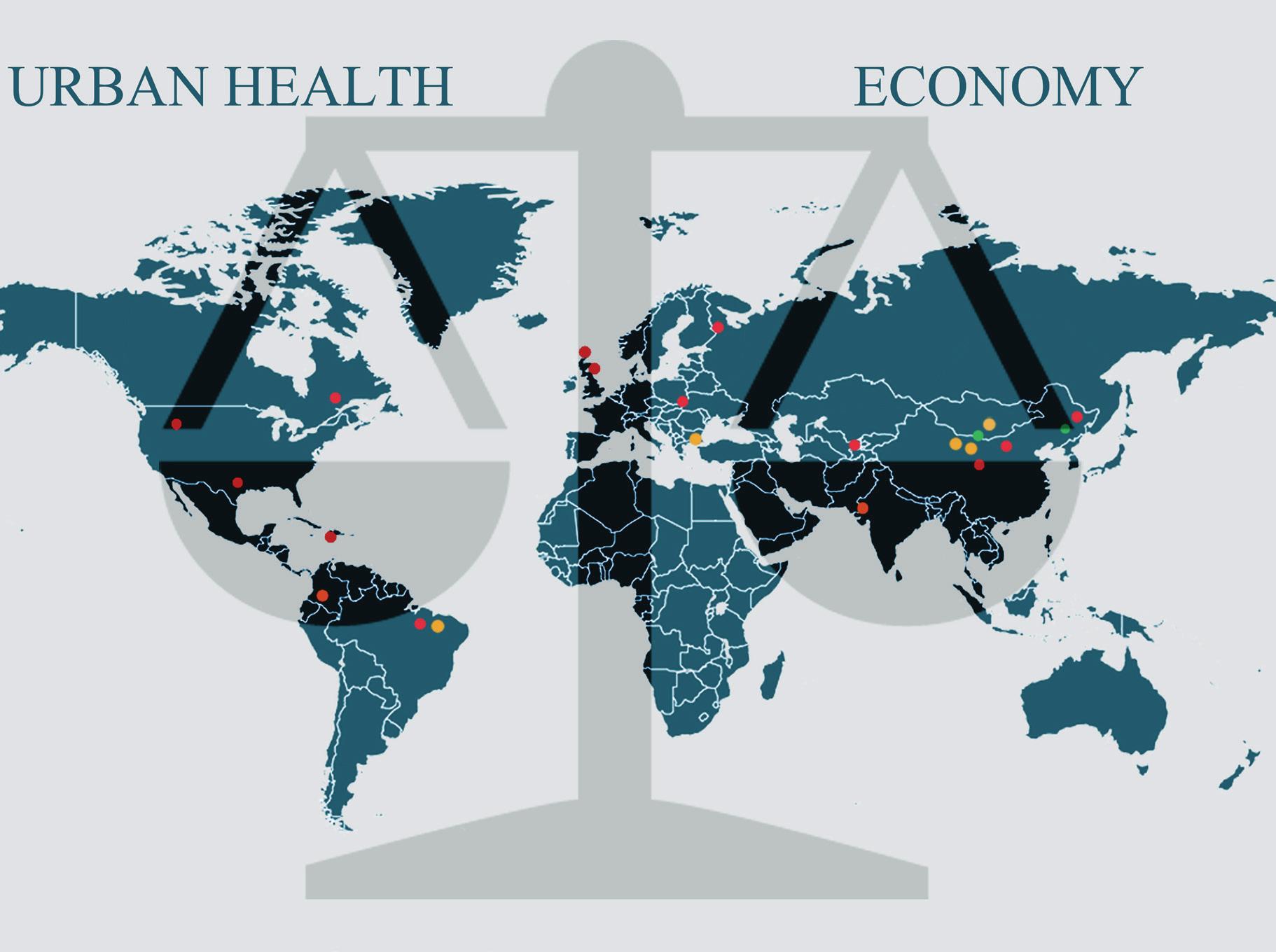






As global megacities undergo rapid economic growth and experience various disease and well-being issues, a focus on urban health is increasingly essential for sustainable economic development. Economic improvement contributes
being and sociodemographic health. However, it can still result in negative


key indicators to document urban health from health behaviour, environment and sociodemographic facets and 2) examine the strength of economic indicators impact on urban health in megacities on a global scale. A quantitative
methodology utilises sampled data from 24 metropolitan cities. Linear regression modelling was applied to analyse the impact of economic development on urban health and identify higher-level associations and patterns in the data set. Although not all results of the modelling
a positive linear relationship between economic development and urban health, especially environmental health, and also suggest the strongest economic indicator to be local income. To adapt to rapid globalisation and urbanisation, it is essential for global megacities also to adjust economic development to improve urban health.







“This thesis investigates the housing problems of older suggestions to policy makers, NGOs and developers.”










Australia, as a multicultural country, is now experiencing an aging society and is troubled by the high price of housing. An increasing number of
they are aged over 65. In particular, housing policies and related services
people from ethnic minorities. Chinese and Indian immigrants in the total Australian population have increased from 2% to 16% over the past half century, underlining the importance of suitably accommodating older people who are ethnic minorities. This thesis investigates the housing problems of older Chinese immigrants in Sydney,


policy makers, NGOs and developers. A comparative study of older Chinese immigrants and other older immigrants
Chinese immigrants housing choice. Interviews and surveys are conducted with stakeholders including older people, children of senior Chinese immigrants, and developers. The


Chinese immigrants who come to Australia via a relative visa are very
the early years of arrival. These elderly people, together with their children, should be given more consideration by government policy makers, NGOs and the development industry.





“Green open spaces are vital social and environmental infrastructure for a sustainable city, and crucial to public health and well-being.”










Green open spaces are vital social and environmental infrastructure for a sustainable and liveable city, and crucial to public health and well-being. As urban global population grows, more pressure is placed on the green open spaces in urban areas. The uneven distribution of

as an environmental justice issue and the provision of adequate green open spaces, within existing and future urban areas, has become a key challenge for urban planning. Green open space planning is based on state and local policies and guidelines and is not often evaluated by empirical investigation. This

study analyses the provision and spatial distribution of green open spaces across the Campbelltown local government
used to measure the distribution of green open spaces within the LGA. Based on the information obtained from the Council website and other data bases, and by utilising Arc GIS software, several analyses are undertaken that highlight spatial inequities. Areas that do not have access to a green open space in their where possible, and based on current land zoning, new future spaces are proposed.







“Universities are often seen as a ‘mini city’ due to their space from the surrounding community.”











Universities are often seen as a ‘mini city’ due to their multi-purpose components
from the surrounding community. Both can work in parallel as Universities bring economic, entertainment and cultural opportunities to the local area. Current campus master plans are exploring the importance of public space and considered, including a reimagination of the idea of the modern civic university. This thesis explores ways in which a large infrastructural precinct like a university can be integrated into the urban fabric and connect with surrounding communities. Current master plans of three Australian

universities; UNSW, RMIT University and Curtin University - are analysed. Using UNSW as the major case study, this thesis aims to understand how members of the community perceive institutional space and physically use the campus. The research uses surveys with students and community members and interviews with both University facilities
discussing the current interrelationships between universities and community, it is found that universities should engage better with local communities through collaborative projects, to strengthen and develop a partnership through sharing open space, shared facilities and mixed uses.







“A more meaningful engagement with transit oriented development is essential if the airport city-corridor is to deliver walkable places in Western Sydney.”











In Australia and internationally, there is an increasing emphasis on the importance of planning walkable cities as they create active lifestyles that mitigate against risk of chronic diseases. In Sydney, spatial disparities in walkability levels are contributing to serious health inequities. Improving walkability in Western Sydney is imperative as more people are experiencing and are at greater risk of developing chronic diseases. The new metropolitan strategy for Greater Sydney re-imagines Western Sydney as a Western Parkland City to be serviced by the future Western Sydney Airport (WSA), based on the aerotropolis concept. Utilising Western Sydney as a case study, the thesis examines how the urban form of airport-driven development



can facilitate walkable places both within the aerotropolis and in nearby centres. The research draws on an extensive policy evaluation and interviews with key stakeholders. Findings suggest that WSA is set to be both an ‘airport city’ and ‘airport corridor’ with potential to deliver targeted improvements in walkability through transit-oriented developments (TOD). A more meaningful engagement with TOD is essential if the airport citycorridor is to deliver walkable places in Western Sydney. Drawing from research on built environment principles that
recommendations on how to better plan for walkable TODs and tackle broader challenges of funding and governance.





“Evidence-based evaluation and knowledge of current level growth in large urban agglomerations.”











Polycentric urban structure has proven a great strategic tool to support
large agglomerations. It has become an important normative objective to enhance the performance of many metropolitan areas. Successive New South Wales State Government policies have embraced this model for Sydney through supporting activity centre development in the fast growing inner and outer western suburbs. Yet despite evidence-based evaluation and knowledge about the current level of polycentricity being essential, there has been limited relevant research in the Australian context. This project unpacks

and various measurement techniques available. It develops an approach to identify and assess emerging economic centres in the Greater Sydney Metropolitan Region based on the 2011 and 2016 Censuses, and some future
ranked on the basis of employment and employment density and then appraised according to the ‘rank-size distribution’ method and by functional


polycentres are then evaluated in the face of recent urban policies such as ‘The Three Cities’ schema of the Greater Sydney Commission. Findings from this research will provide insights for urban planning and decision making.





“This thesis investigates place-based crime and perception of safety by examining hotspots of ‘fear of crime’ for women at UNSW.”











‘Fear of crime’ hotspots for female university students: A case study of the UNSW campus
The relationship between the built environment and fear of crime is an established focus in urban studies. With the closer integration of universities into the broader public realm, the concern of safety has become more serious than ever on campuses. Recent media and government reports have highlighted the issue of crime and safety in Australian universities. With the rise in incidences of gender-based crime, it is important to understand student’s fear of crime in taking mitigation measures. This thesis investigates place-based crime and perception of safety by examining



hotspots of ‘fear of crime’ for women at UNSW. Data for the study come from a series of walking interviews of female students. The results are recorded using a survey mapping tool highlighting the places where those female students felt safe or unsafe while walking alone at night. A campus audit was also conducted to identify levels of visibility and surveillance to help contextualise the
the majority of female students do feel safe on campus. This study will add to qualitative research on ‘fear of crime’ of students within university settings.




“While energy prosumers are growing rapidly and contributing to a low-carbon energy system, there are barriers that prevent some urban dwellers from participating.”




Master of City Planning








Technologies that enable individuals to both produce and consume goods and services are enabling a new market actor to emerge in the provision of urban infrastructure. Termed ‘prosumers’, these actors are disrupting highly centralised utility and mobility markets. They raise issues for urban planners who are tasked with ensuring essential urban services are available and provided equitably. This thesis contributes to the practice of urban planning, seeking to understand

policy settings that facilitate or inhibit their actions. Using Greater Sydney as a case study, it analyses energy prosumers who utilise distributed energy resources of small-scale solar photovoltaic (PV)
systems and concurrent battery storage.
prosumers are growing rapidly and contributing to a low-carbon energy system, there are barriers to participation for some urban dwellers. The thesis
structure as key demographic variables


response by the planning system to date to redress barriers and the overall equitability of the changing energy system. The thesis makes broader recommendations for planners to consider in the development of other urban service markets where prosumers are emerging.





“The research advocates improving urban development structure in four aspects: industrial structure, energy structure, transportation structure and urban spatial structure.”




Image credit: https://timgsa.baidu.com/






The
The process of economic development is not without cost. Environmental degradation, especially fog and haze caused by air pollution, is one of the industrialization and urbanization. The formation of fog and haze may seriously even human health. Therefore, how to adjust the existing urban development models to improve air quality is a vital issue in urban planning today. This research explores the impact of smog on




urban development through case studies in Beijing benchmarked against other big cities. The research advocates improving urban development structure in four aspects: industrial structure, energy structure, transportation structure and urban spatial structure. As the main case of this research, Beijing has changed from a city with the worst air quality to a model of good urban air quality
research and policy lessons for all cities, especially industrialized metropolises.


Associate Professor
Dr Hoon Han Discipline Director

Associate Professor
Dr Simon Pinnegar

Senior Lecturer
Dr Gethin Davison
City Planning Program

Professor
Dr Susan Thompson

Associate Professor
Dr Nancy Marshall

Lecturer
Dr Laura Crommelin

Professor
Dr Robert Freestone

Senior Lecturer
Dr Christine Steinmetz

Lecturer
Dr Laurence Troy
City Planning Program Director
Associate Professor Hoon Han
BCP Thesis Project Coordinator, Abstract and Image Editor and Catalogue Editor
Dr Christine Steinmetz
MCP Thesis Project Coordinator and Abstract Editor
Professor Robert Freestone
Catalogue Designer
Frédérique N Sunstrüm
Industry Professionals Contributing to the UNSW Planning Program in 2019:
Alicia Baker
Michael Bishop
Clare Brown
Amit Choudhury
Jim Colman
Hazel Easthope
Jeremy Gill
Matt Hurst
Rachel Johnston
Matt Kelly
Scott Perugini Kelly
Edgar Liu
Chris Martin
Steve McMahon
Graham Nelmes
Bill Randolph
David Rolinson
Michael Rowe
Richard Shepherd
Sian Thompson
Sharon Veale
Danny Wiggins
Peter Williams
Sherry Xiong
Alison Ziller
















UNSW Sydney




UNSW Built Environment
Sydney NSW 2052 Australia
T: +61 (2) 9385 4799
E: fbe@unsw.edu.au be.unsw.edu.au













